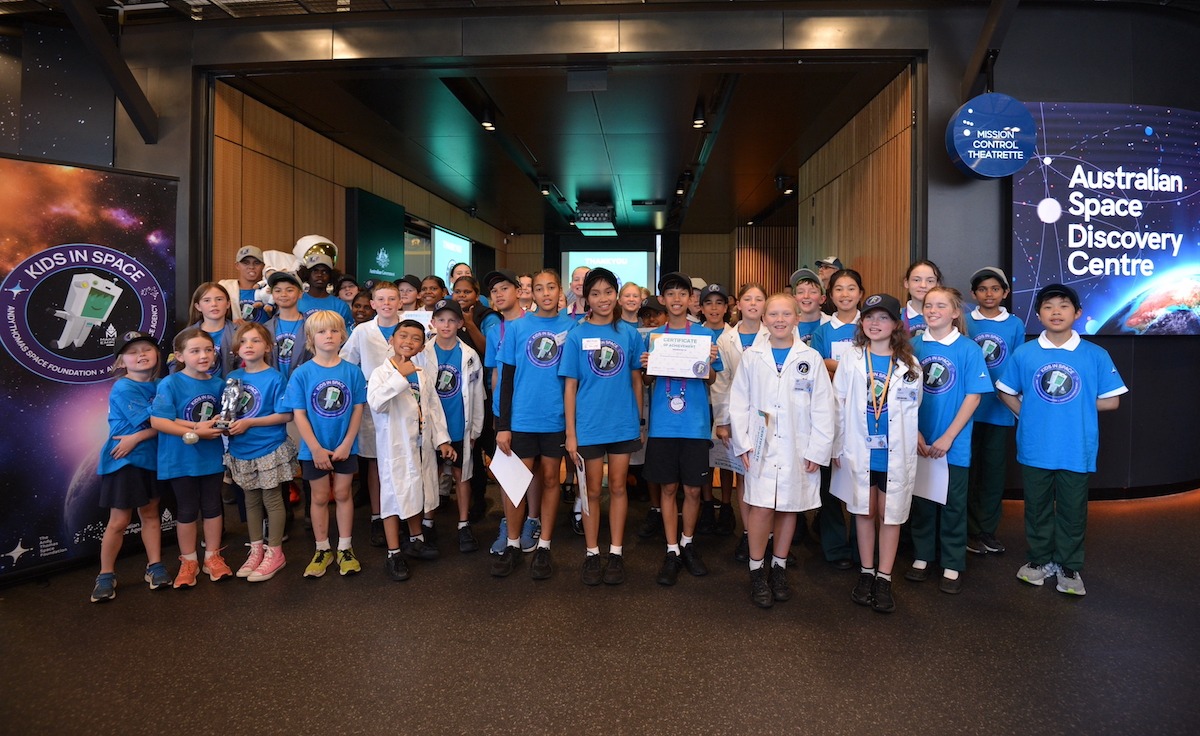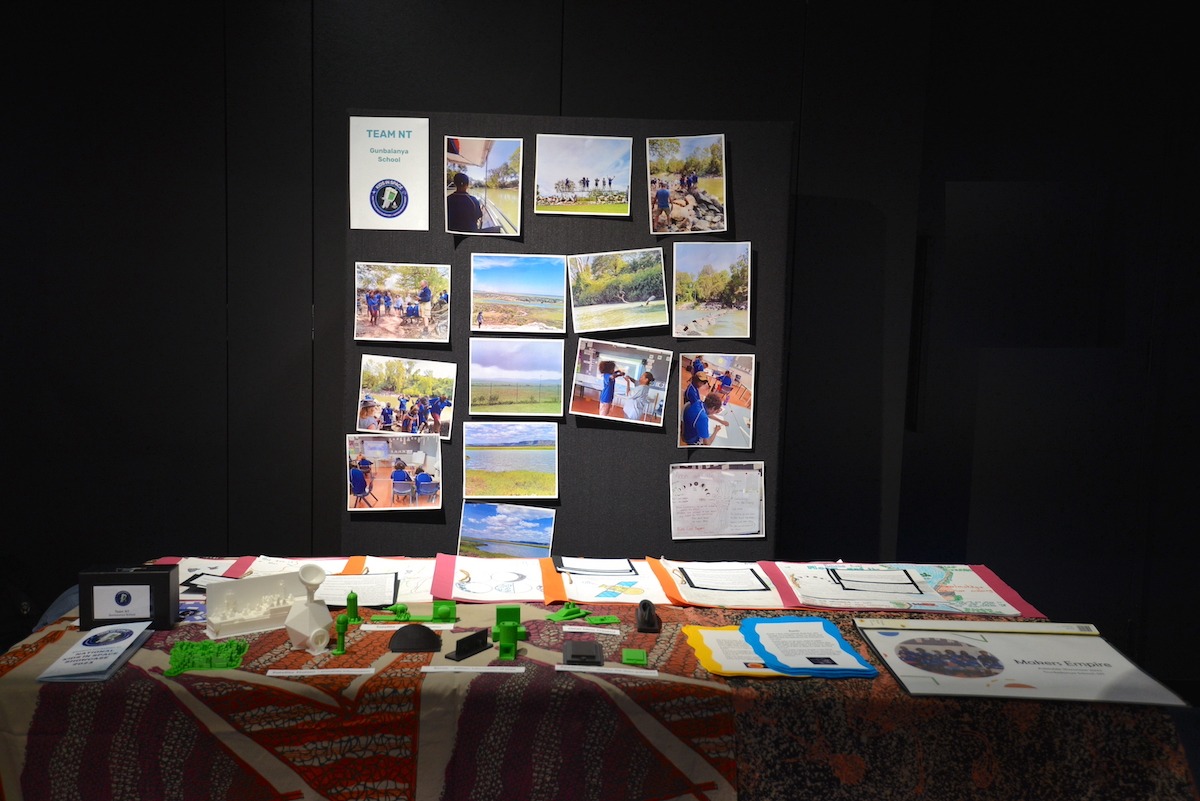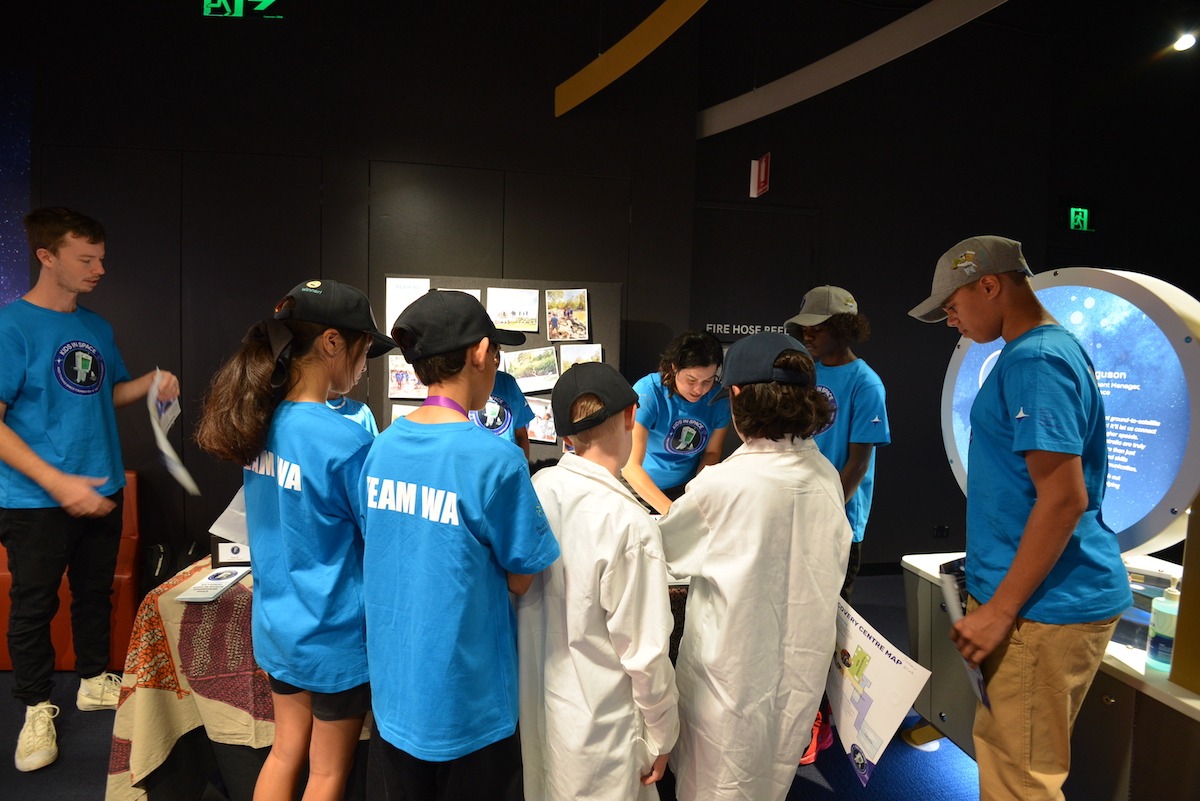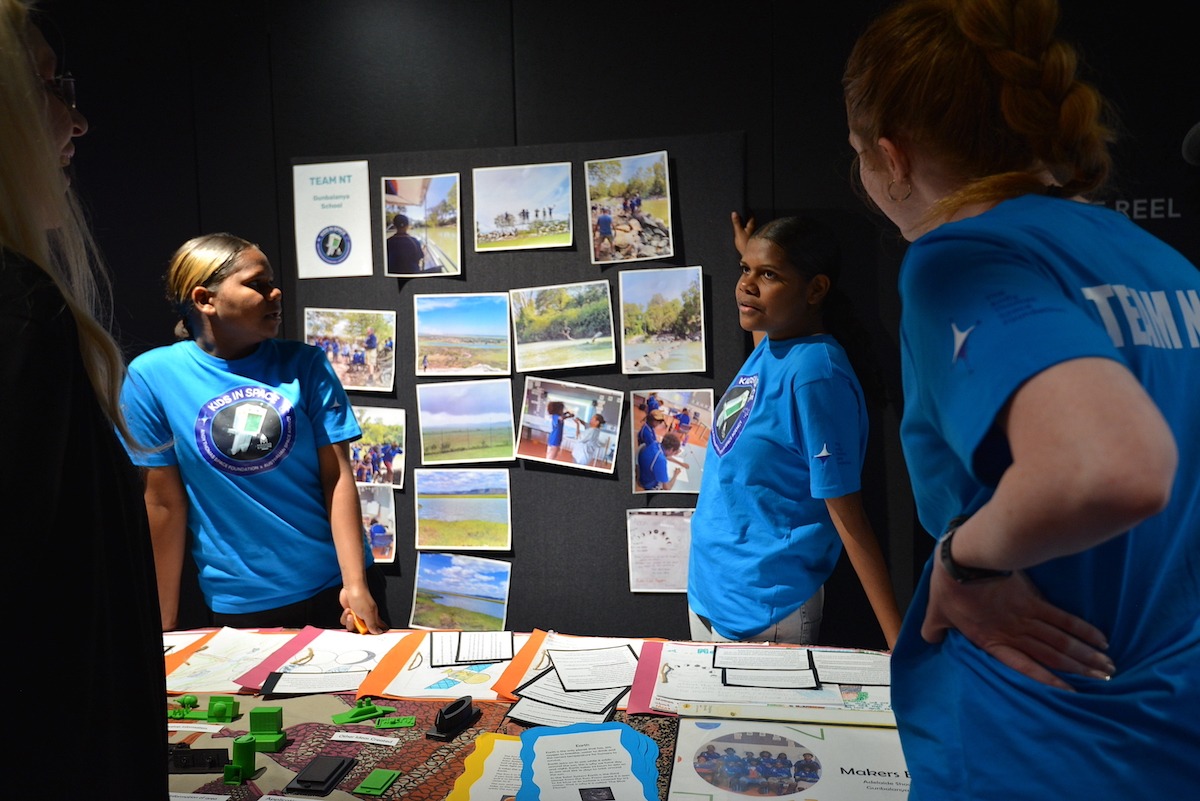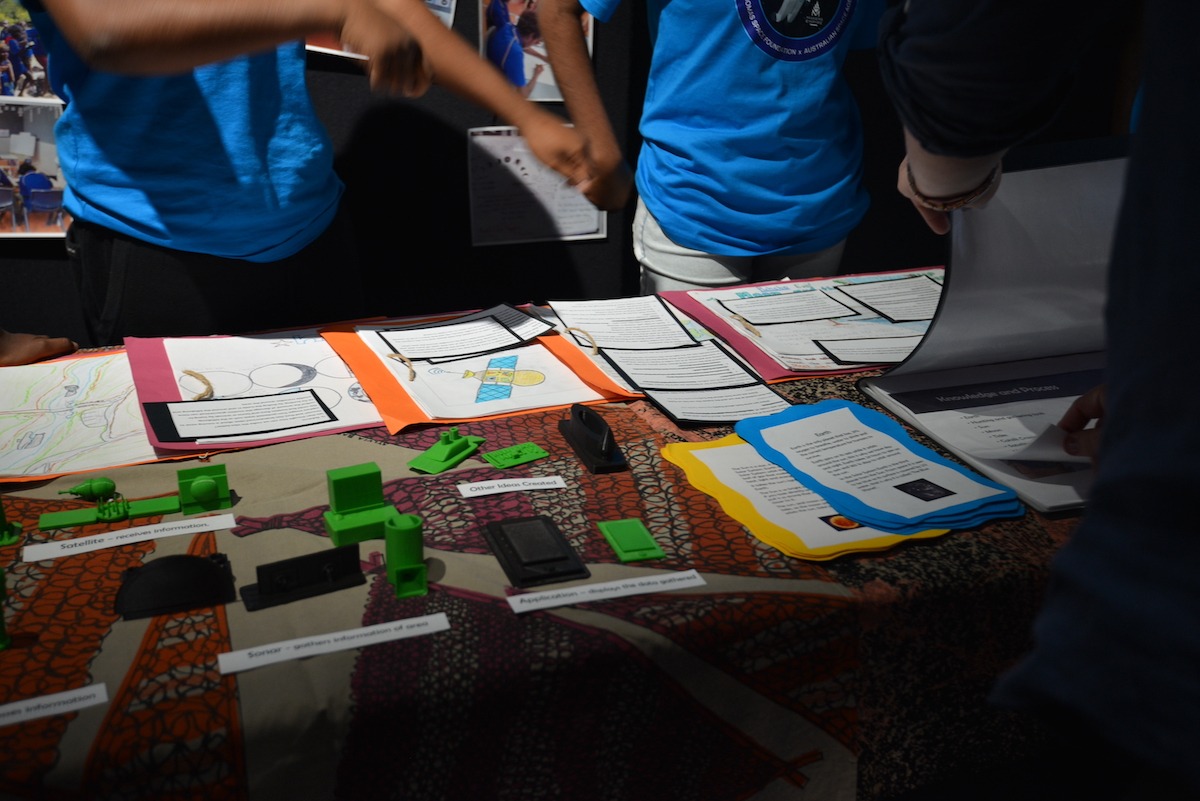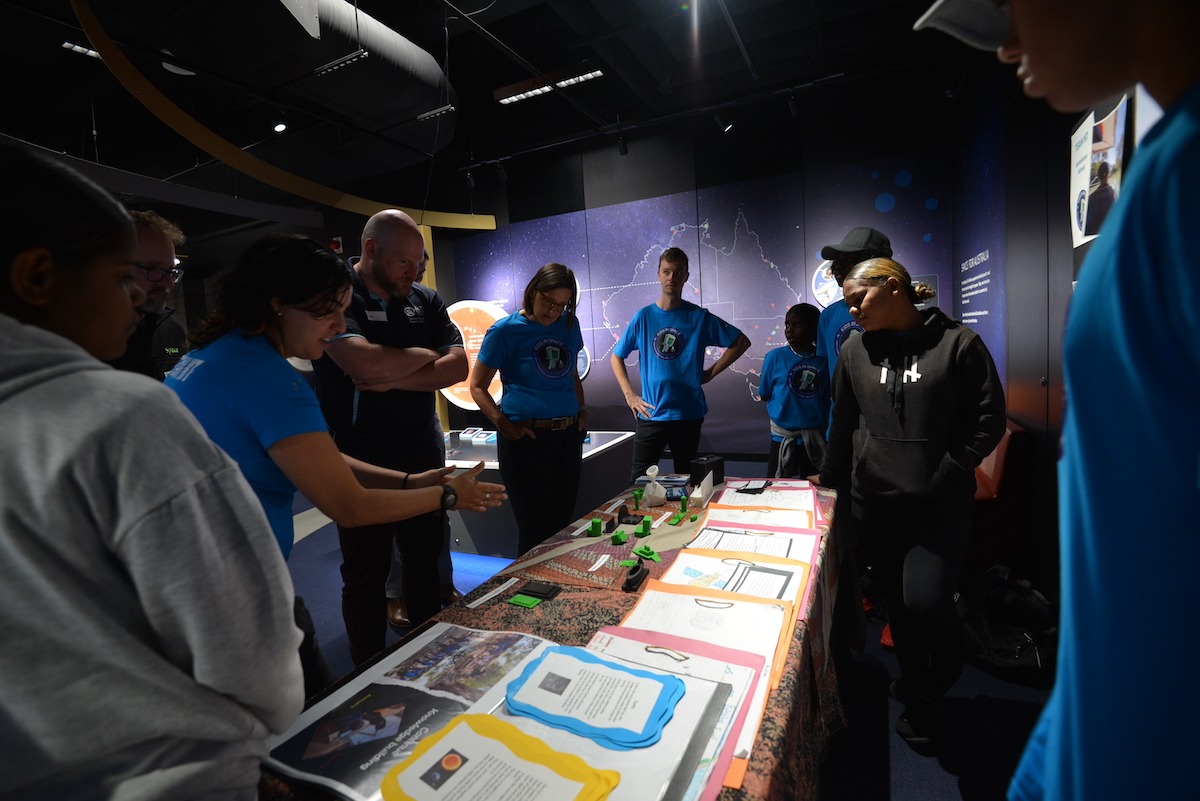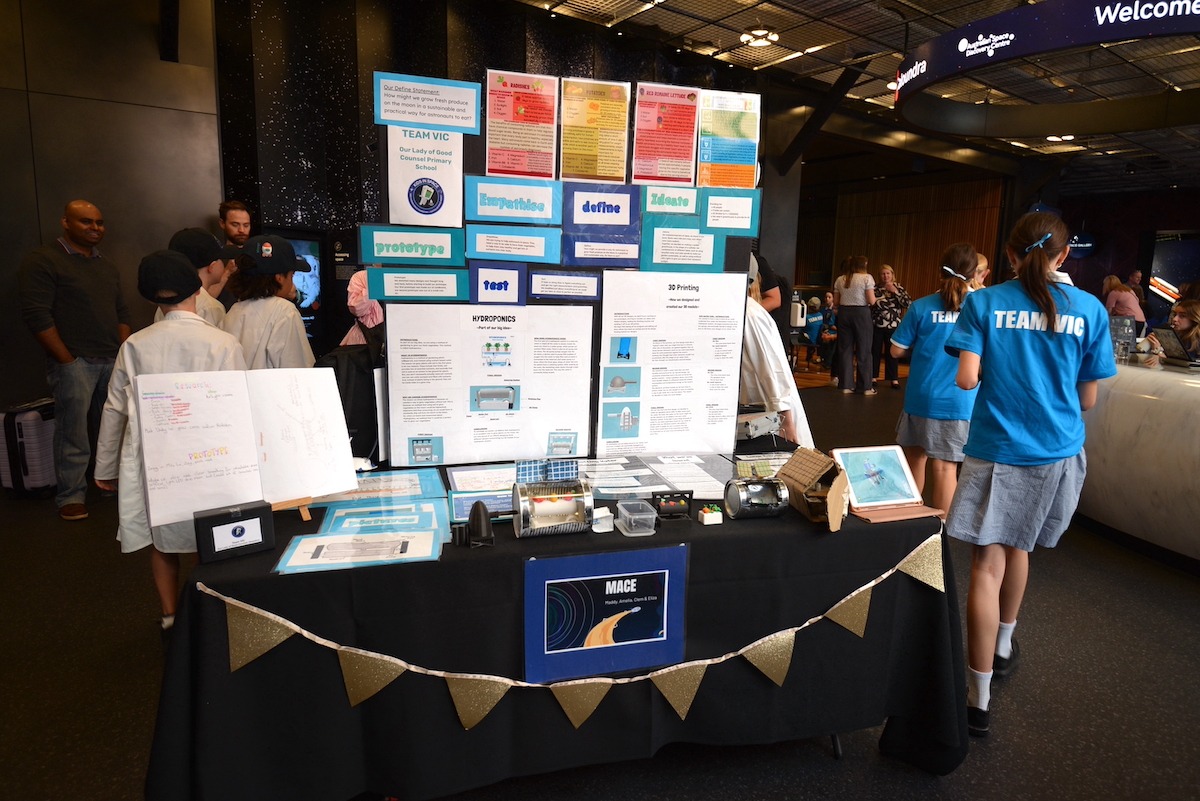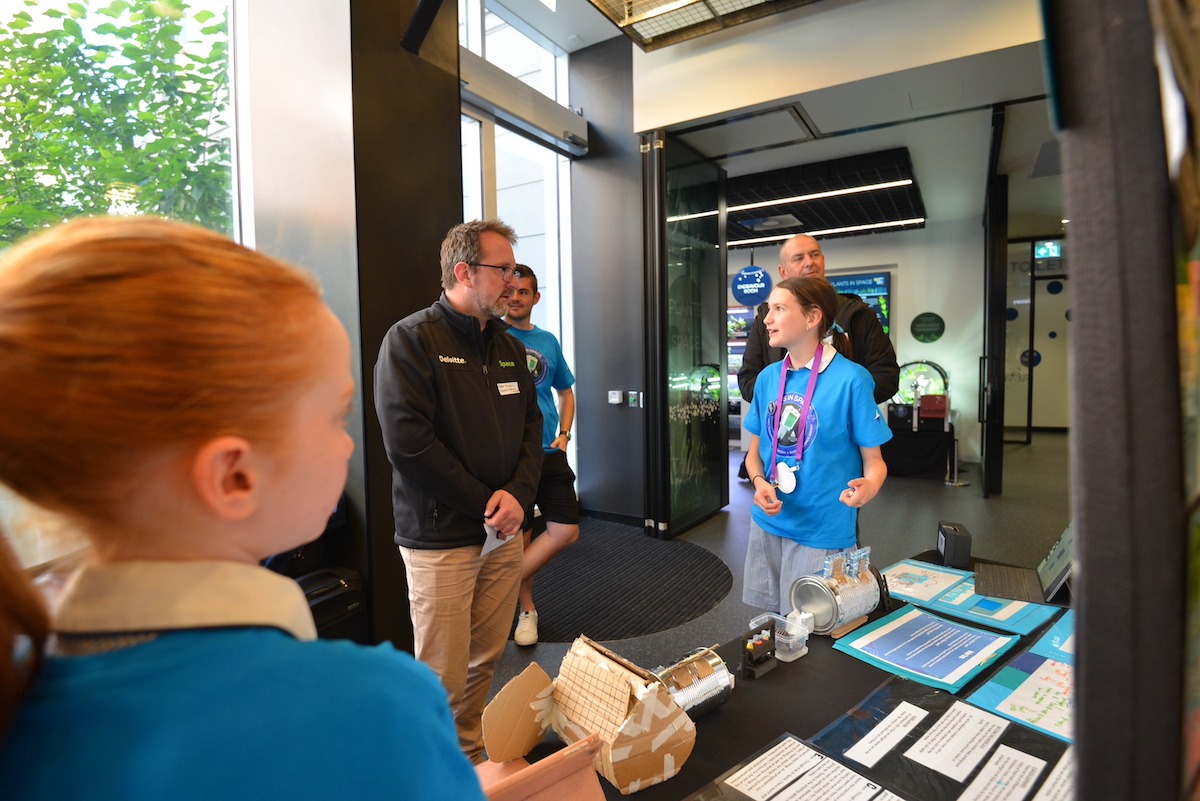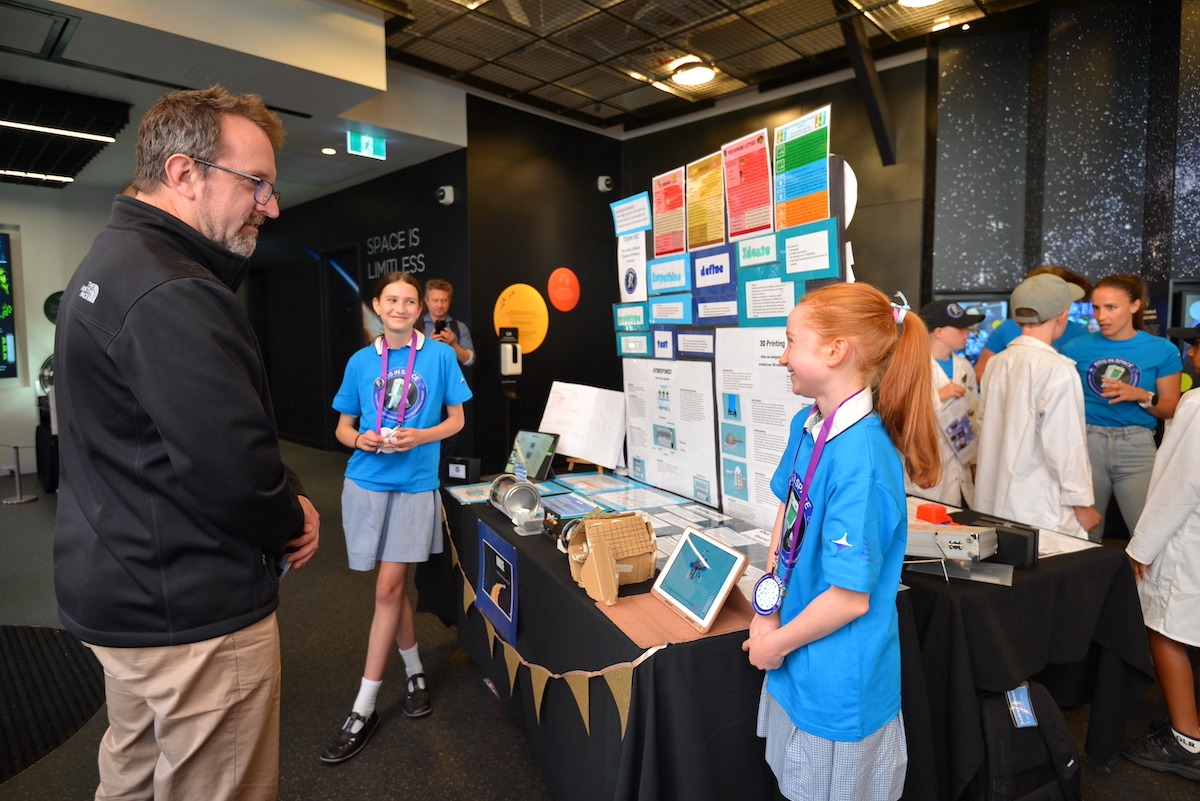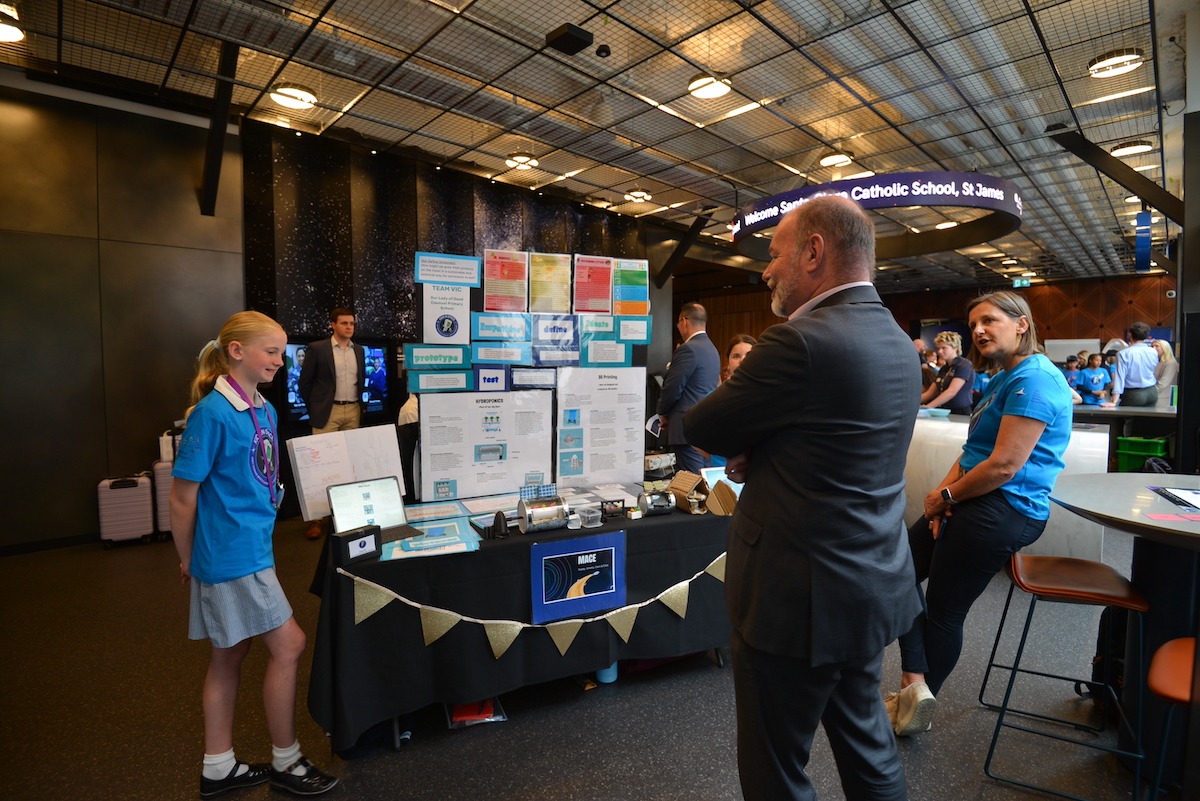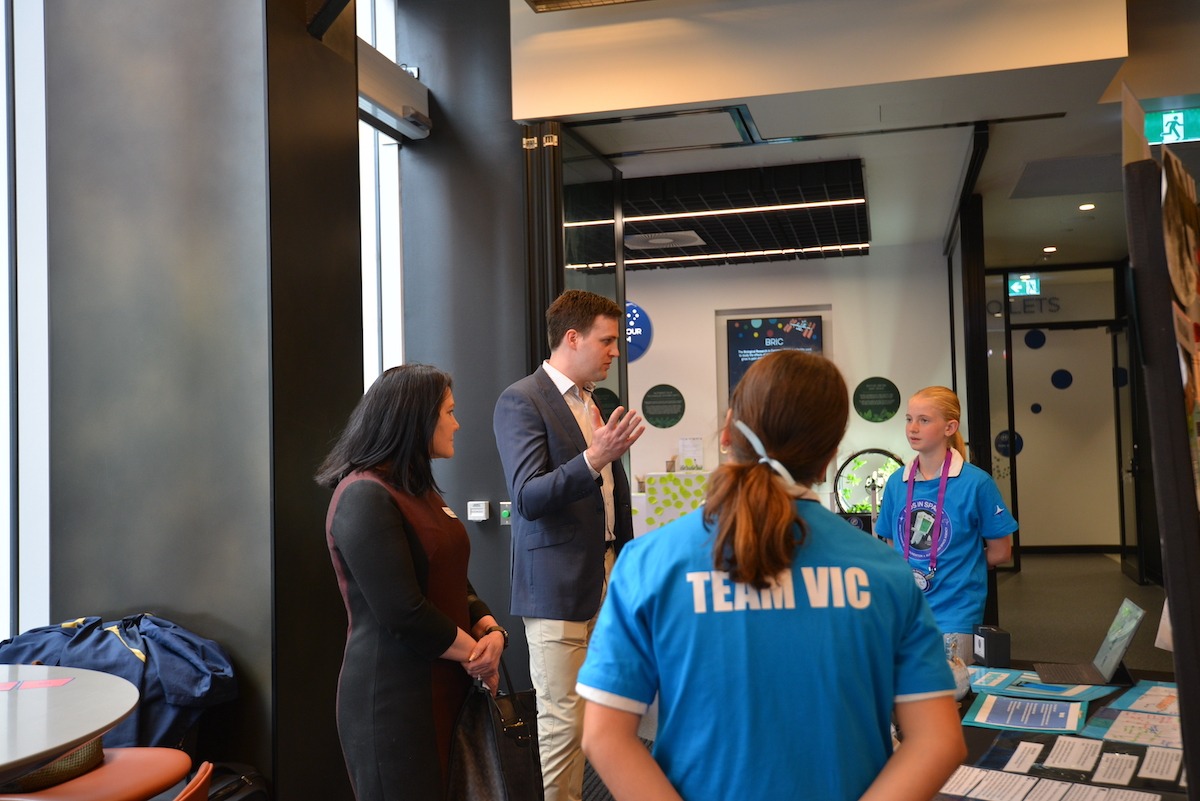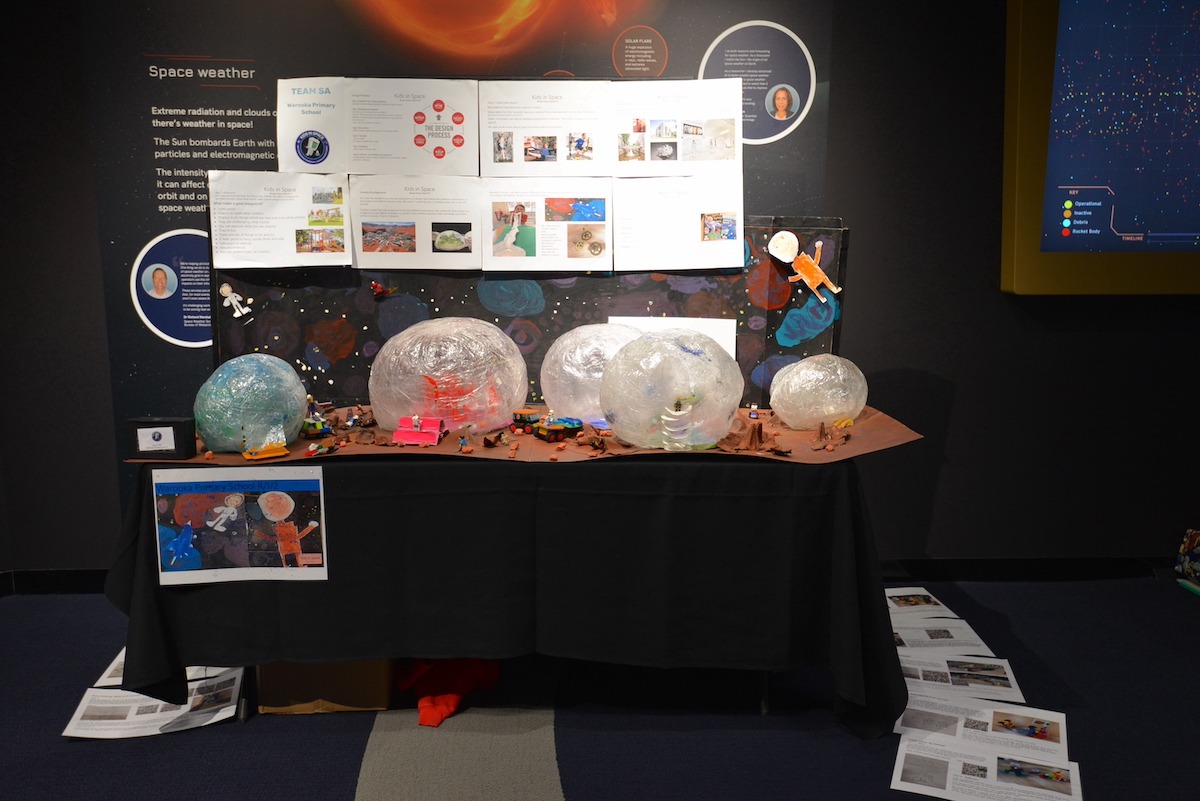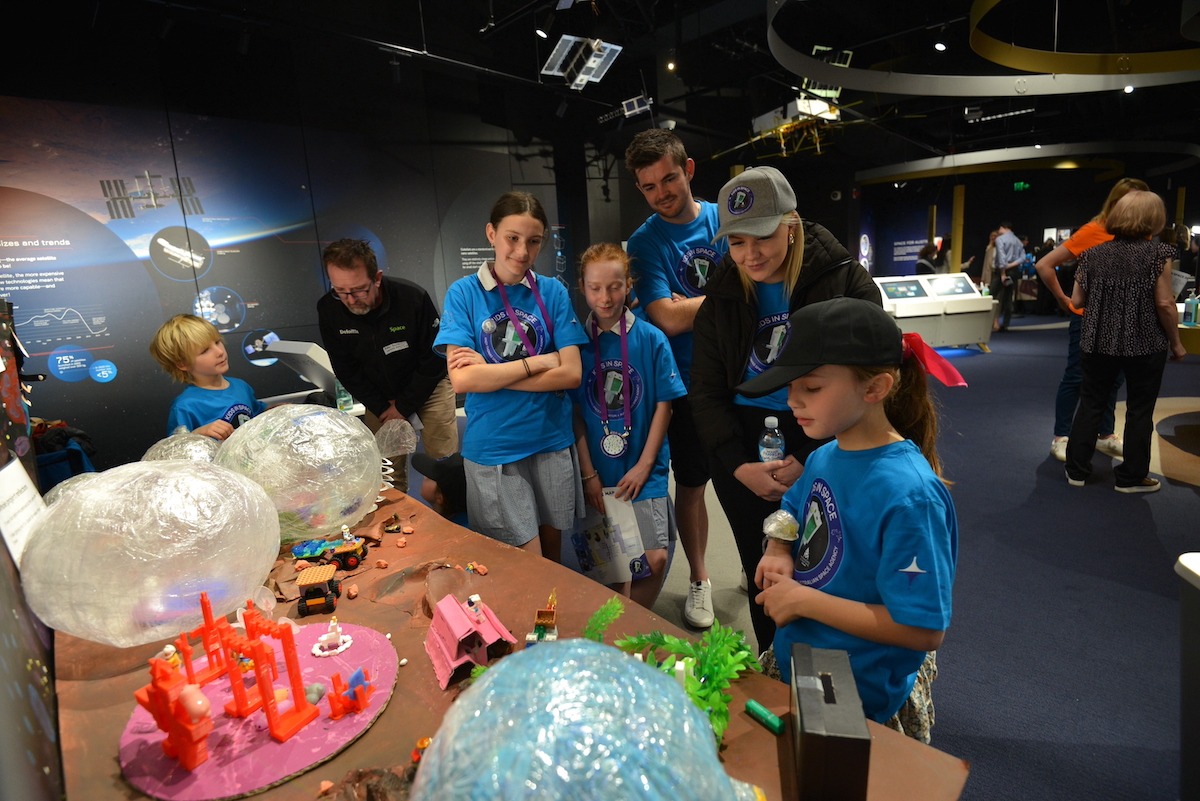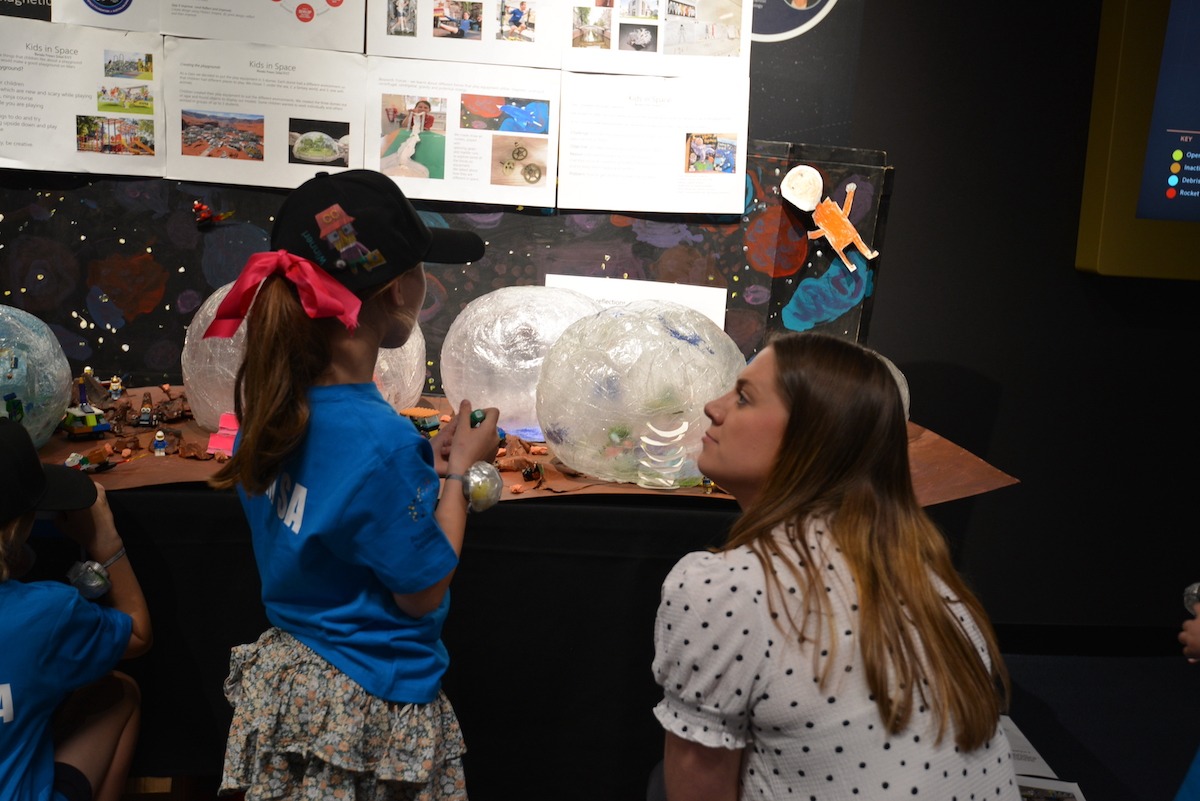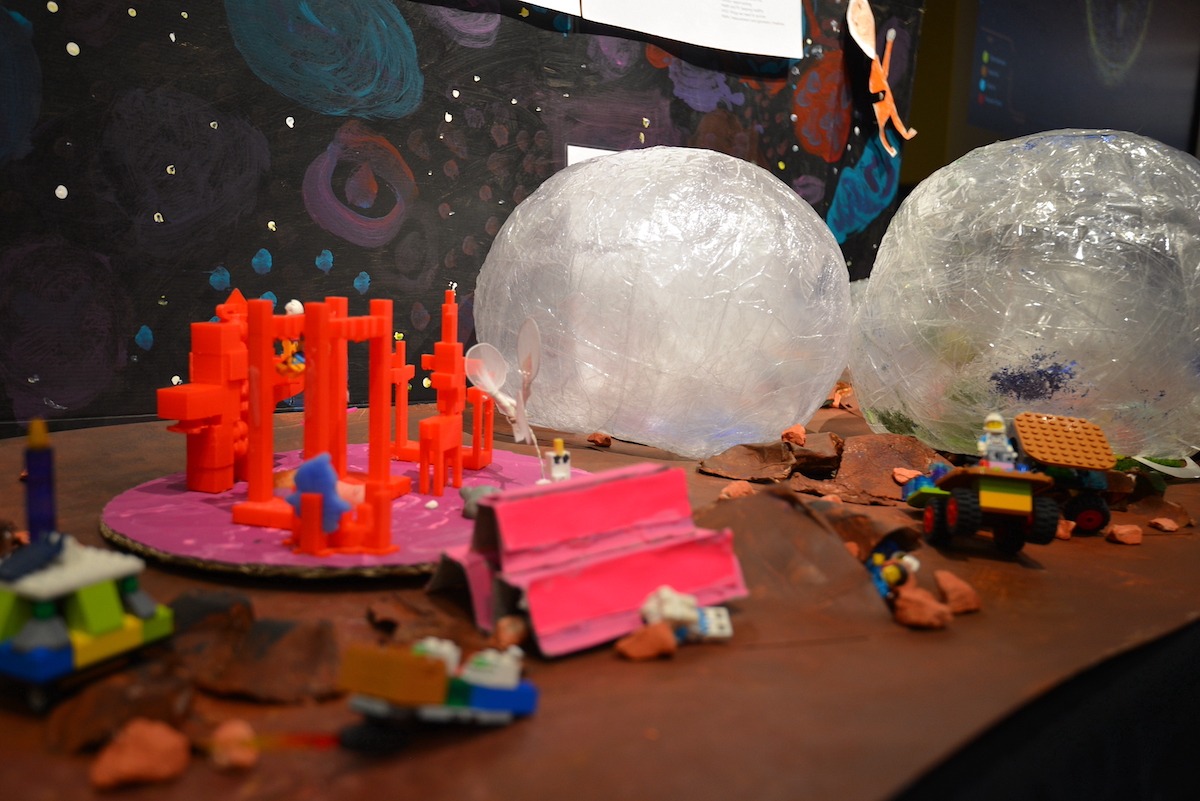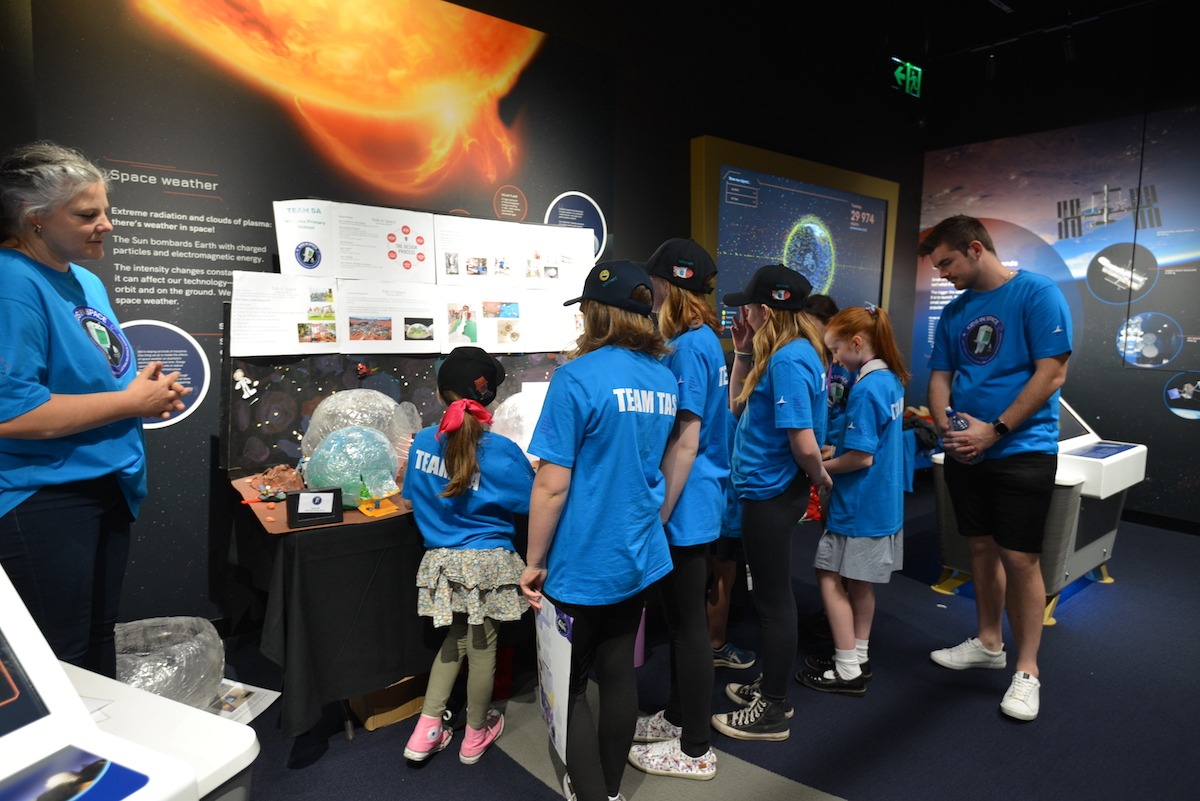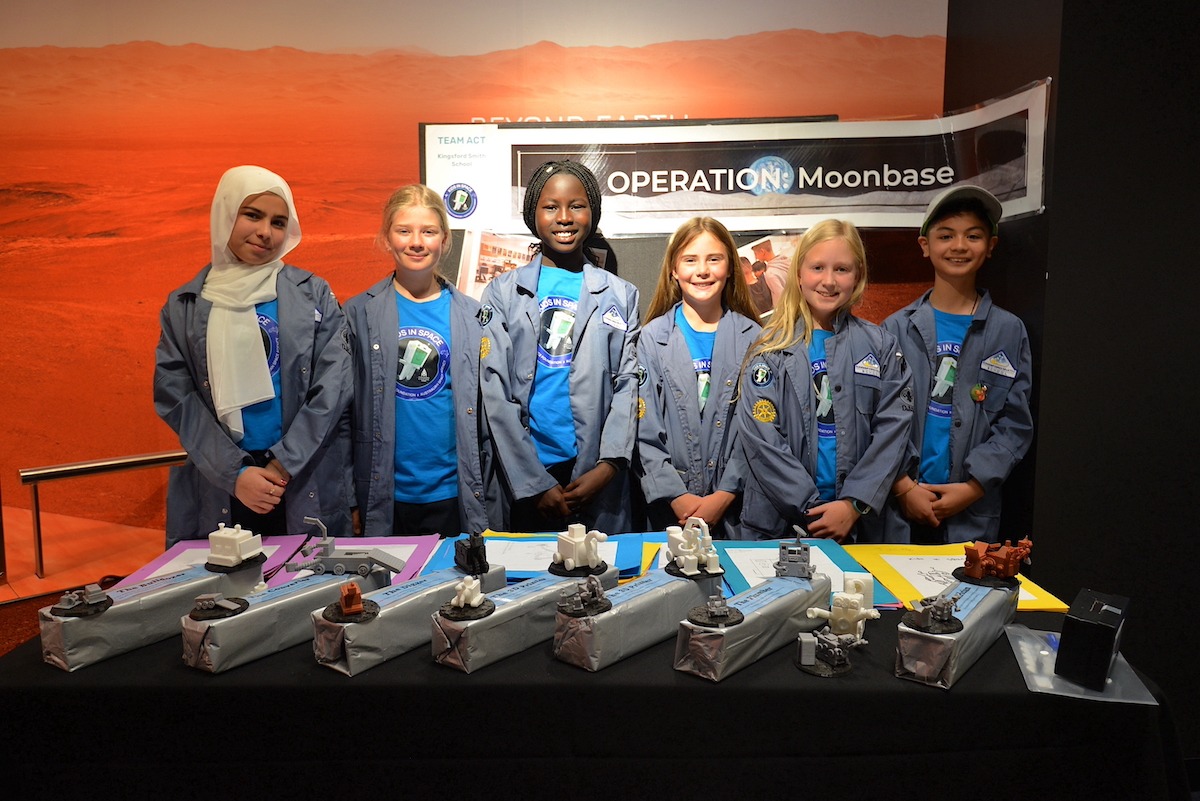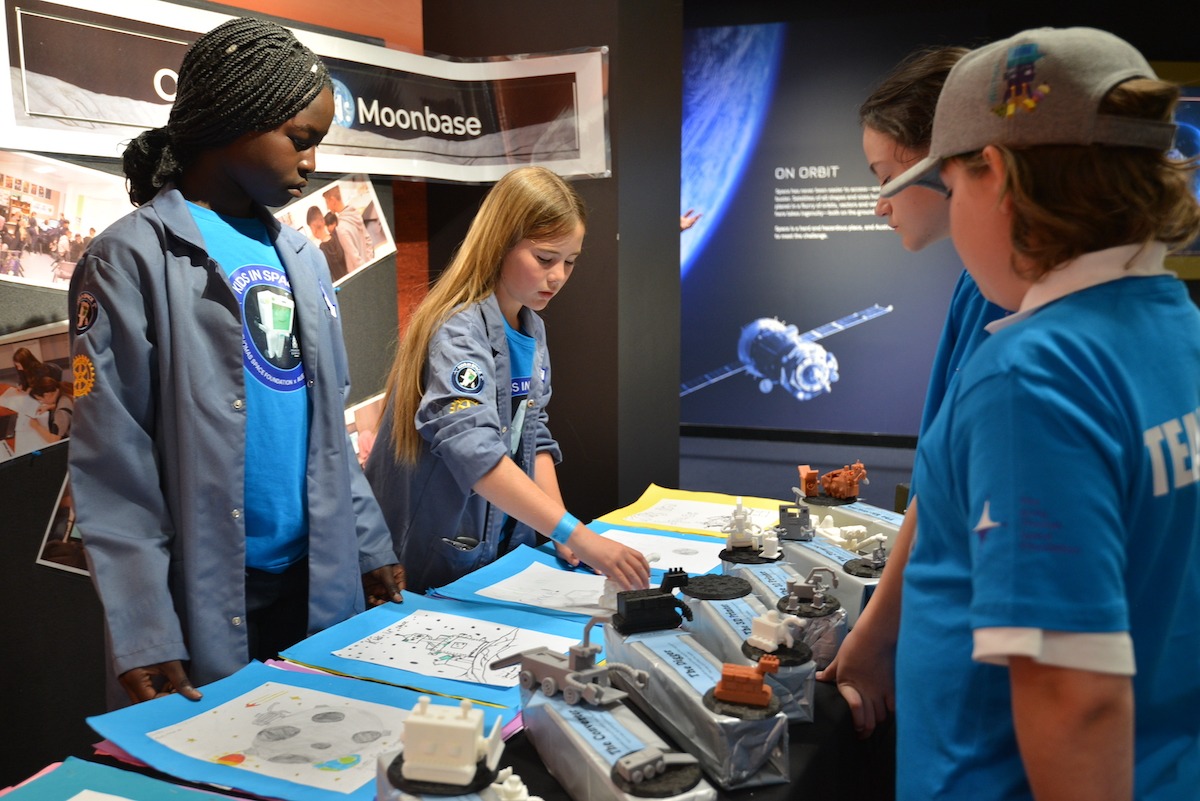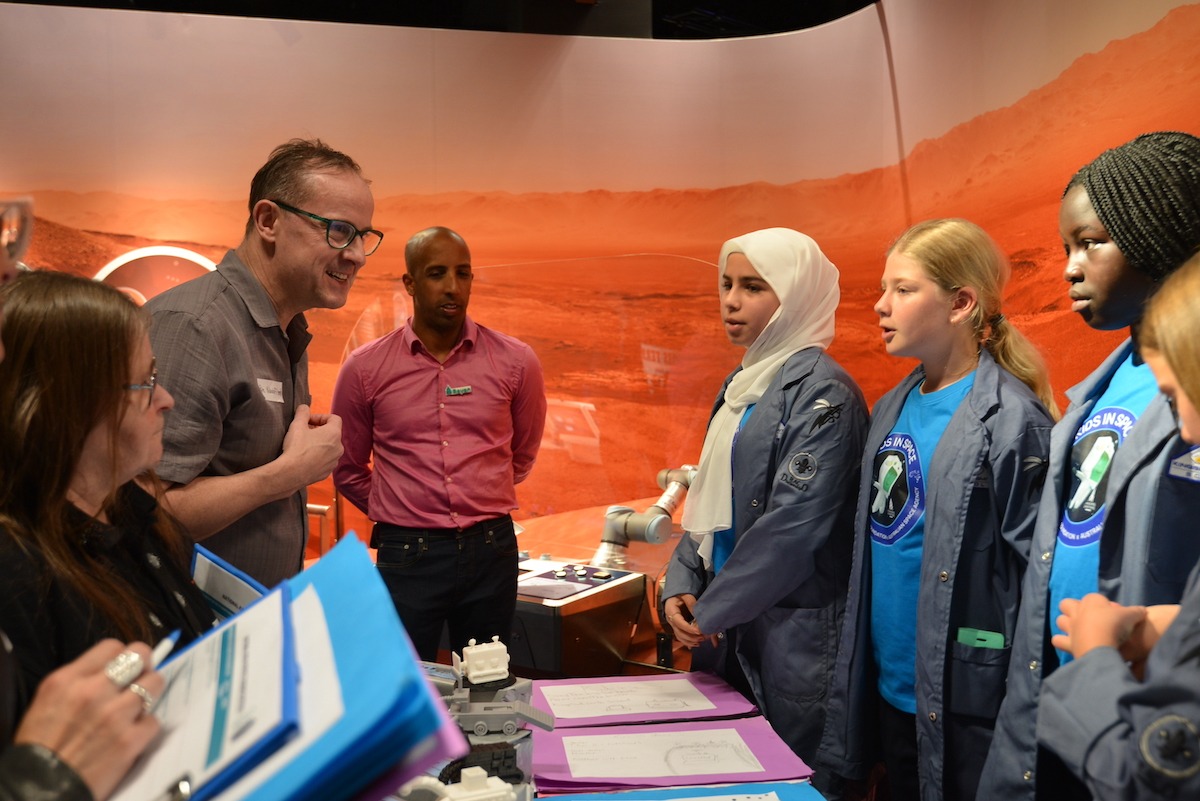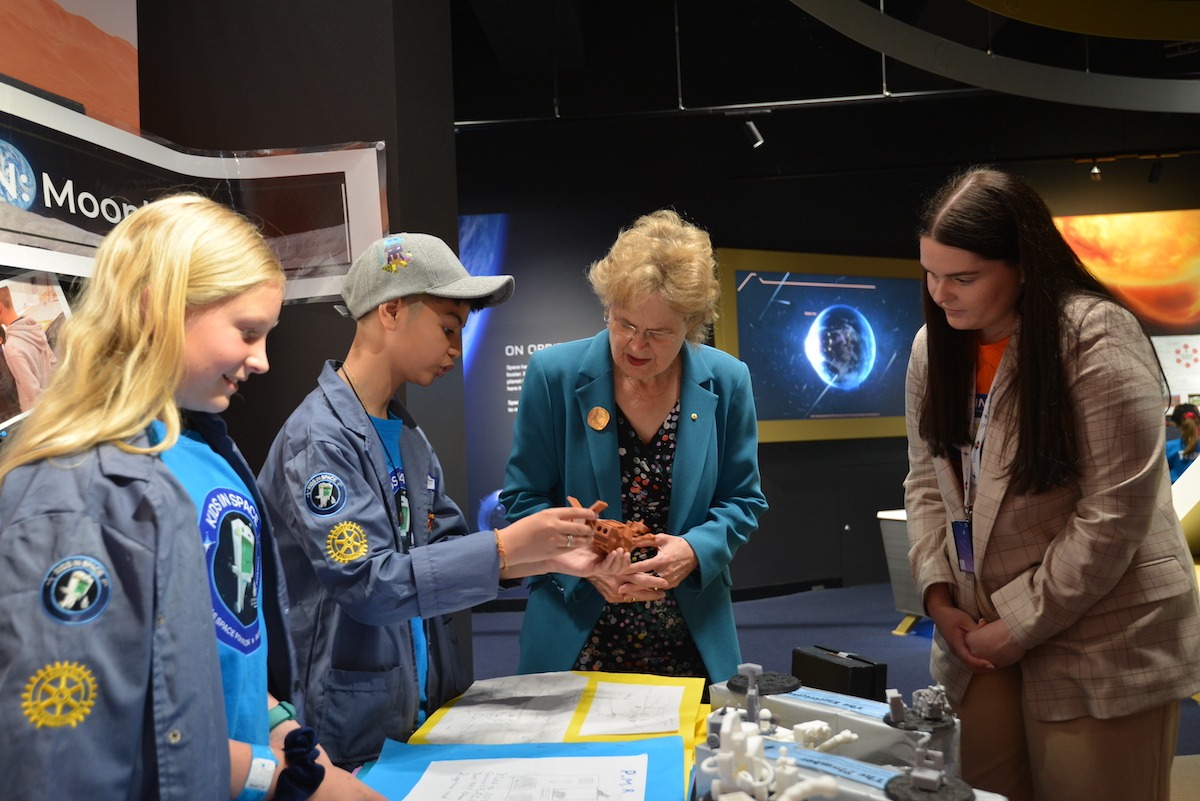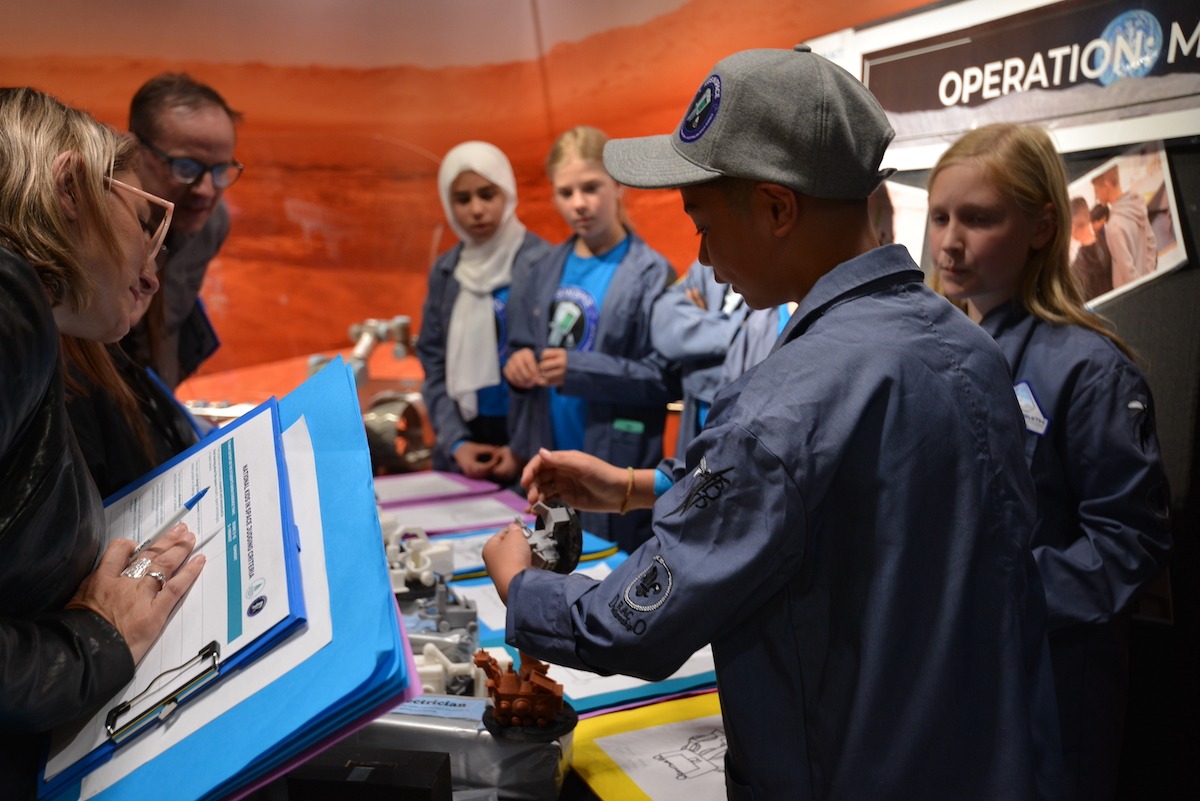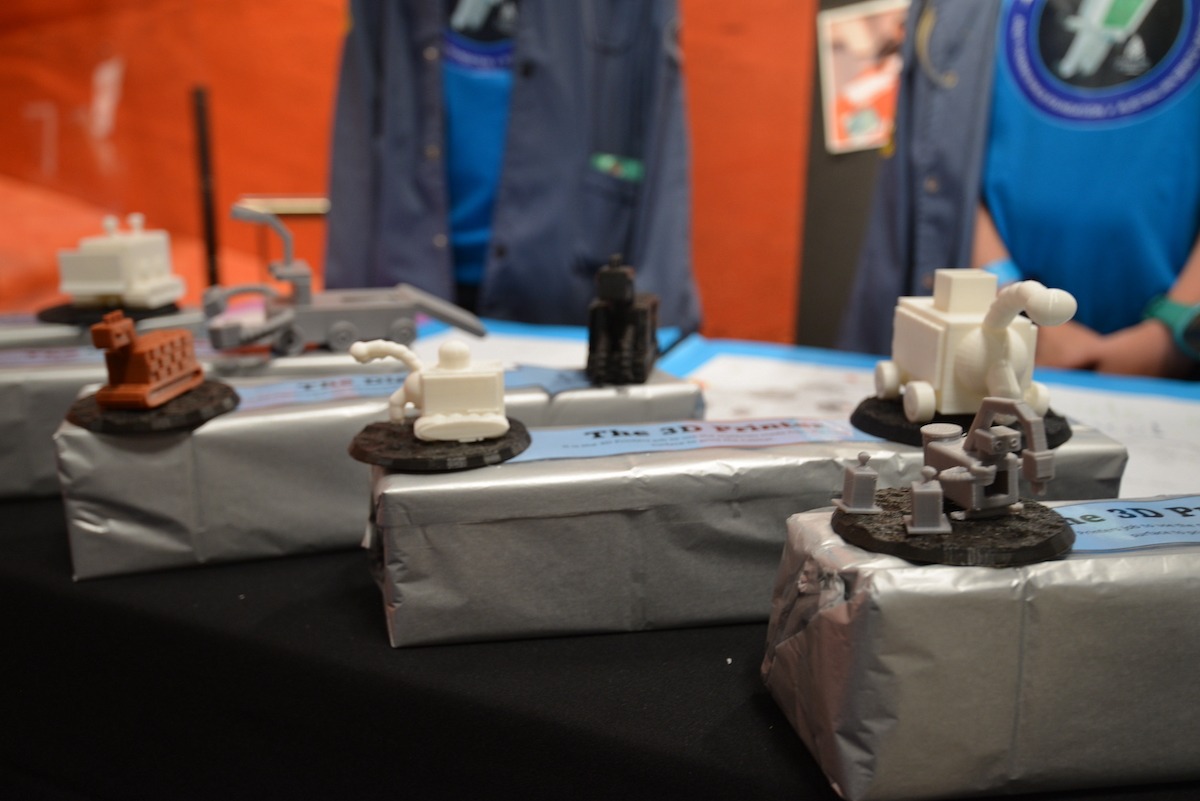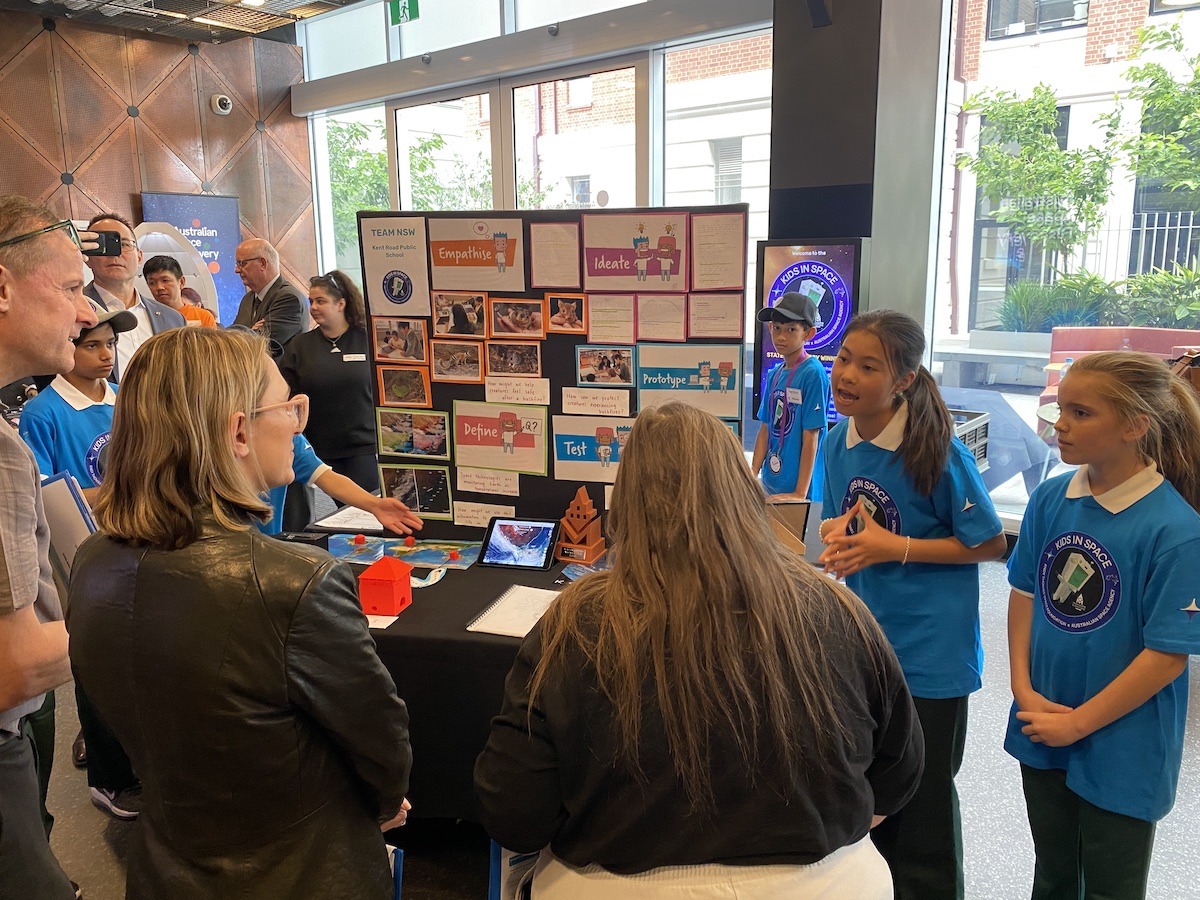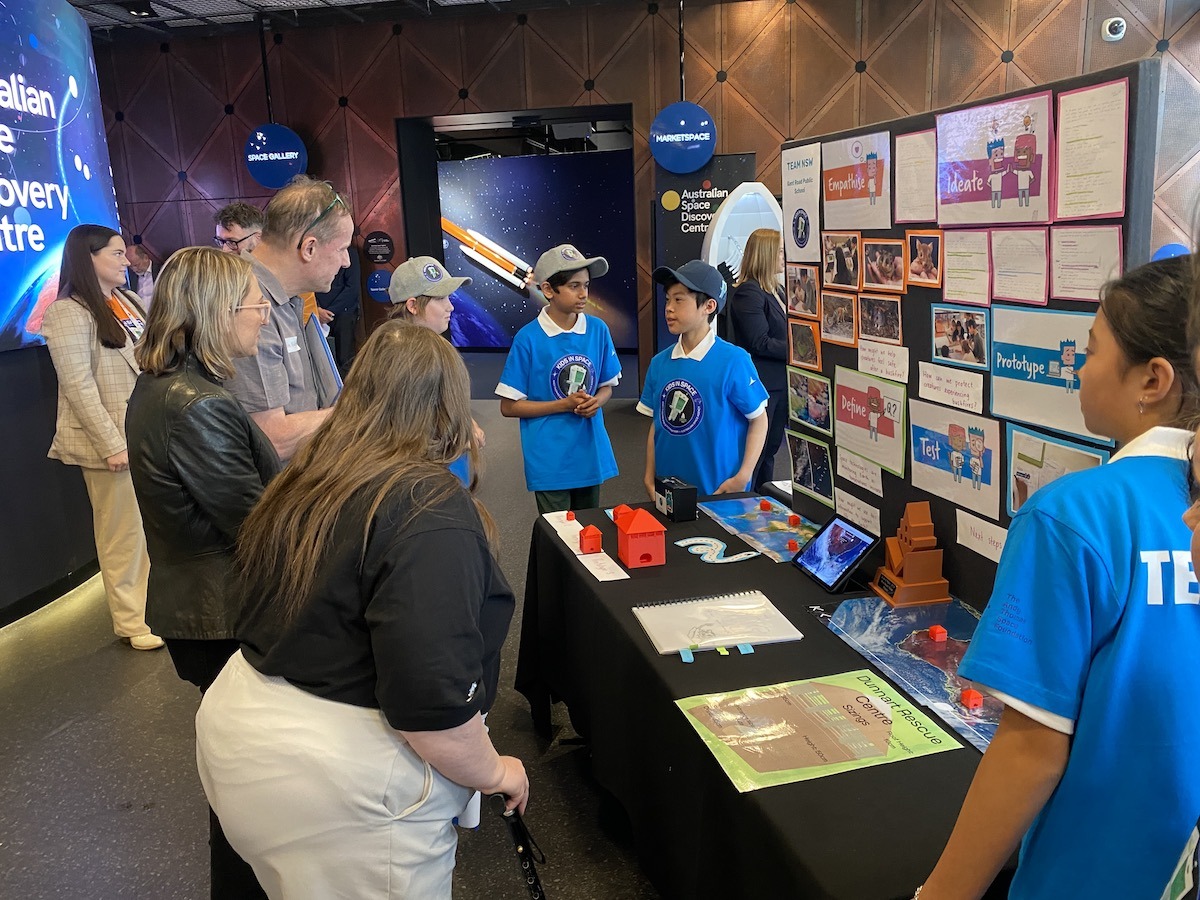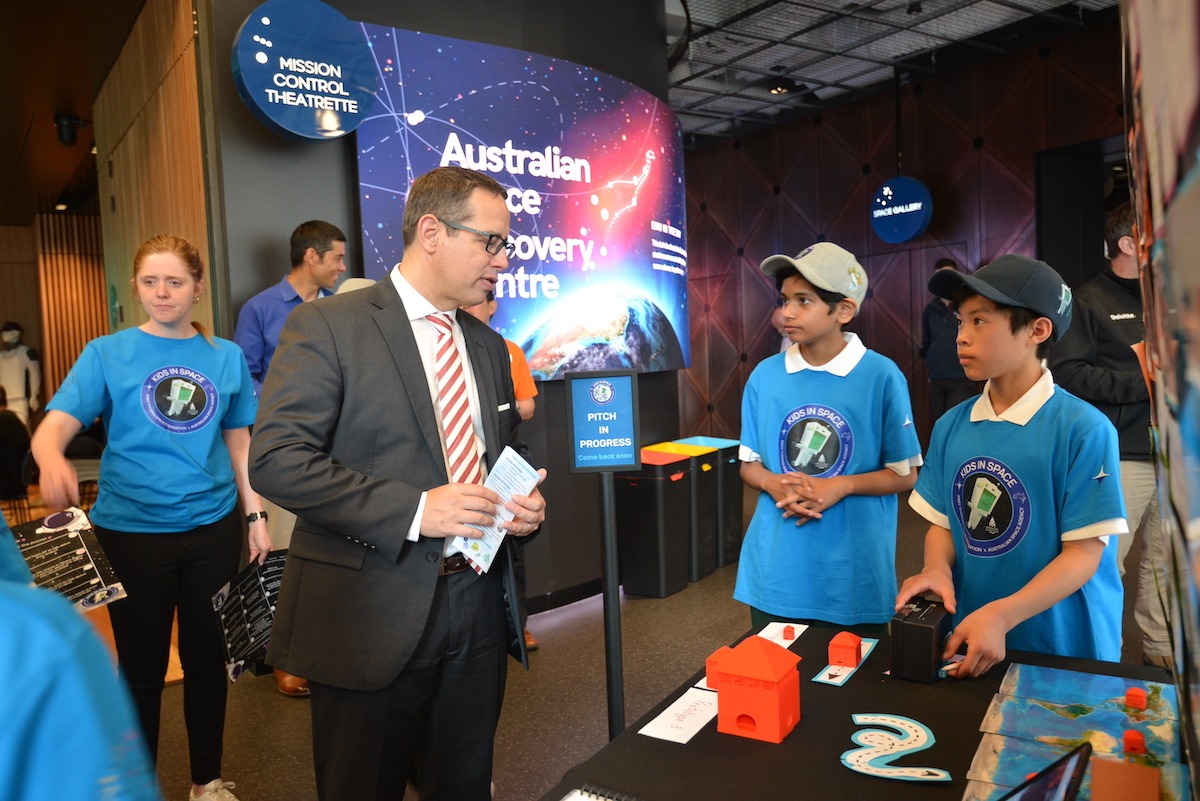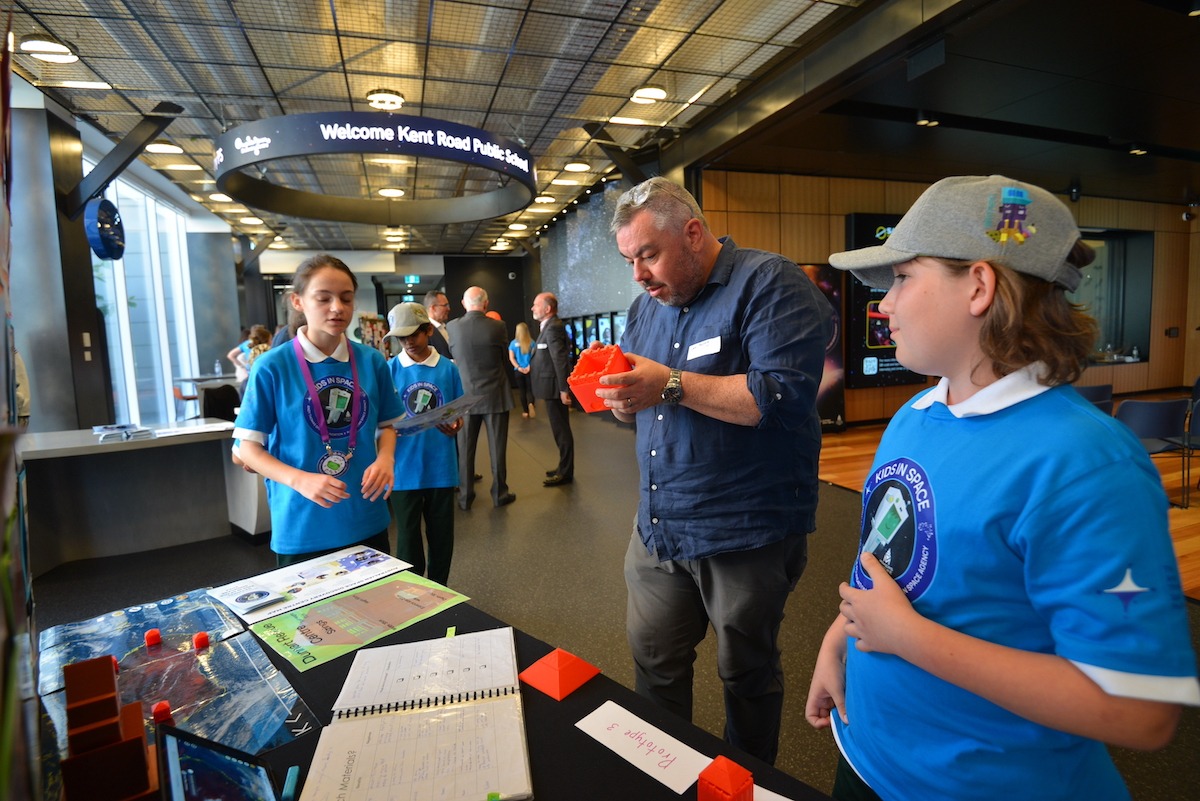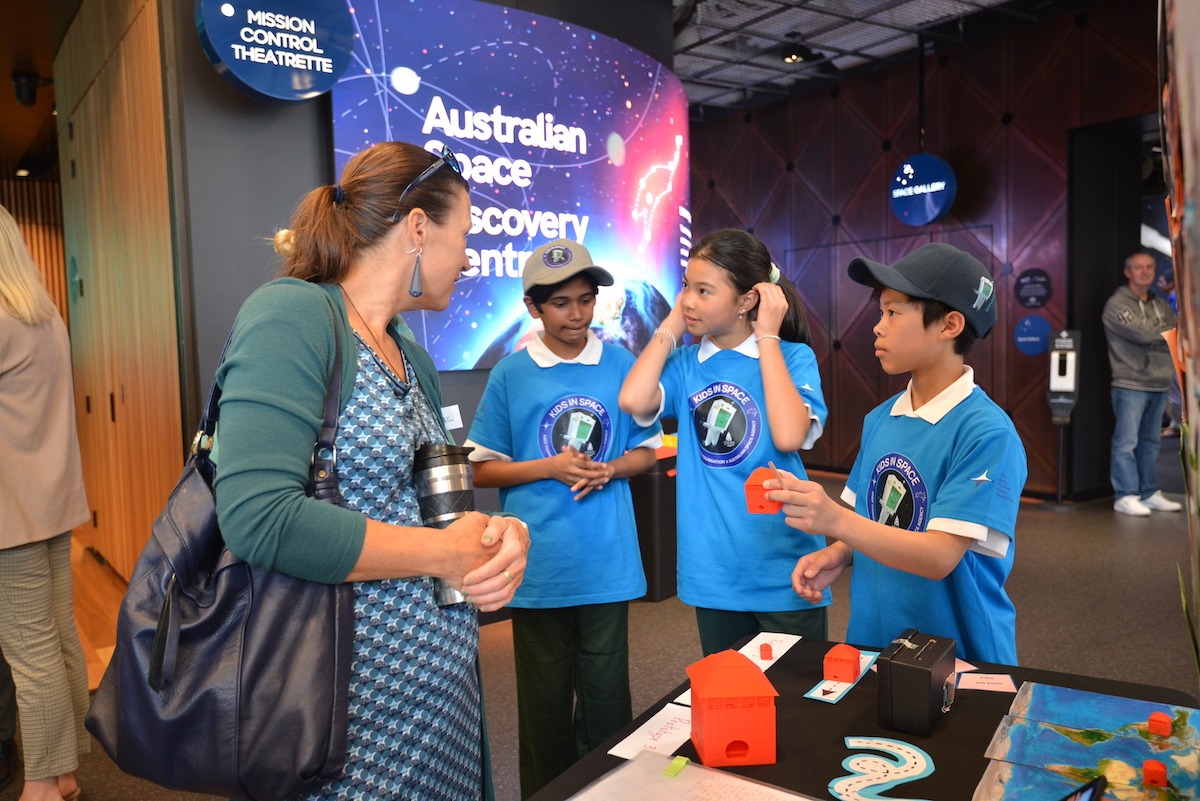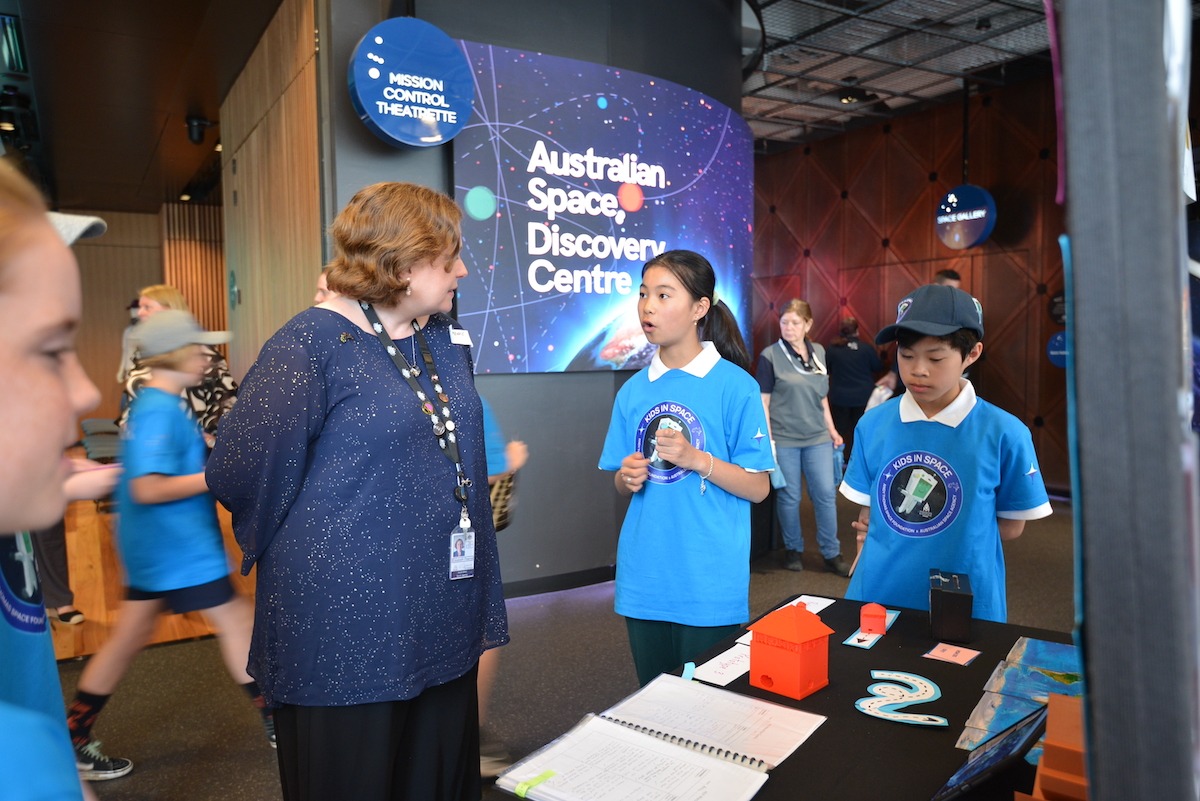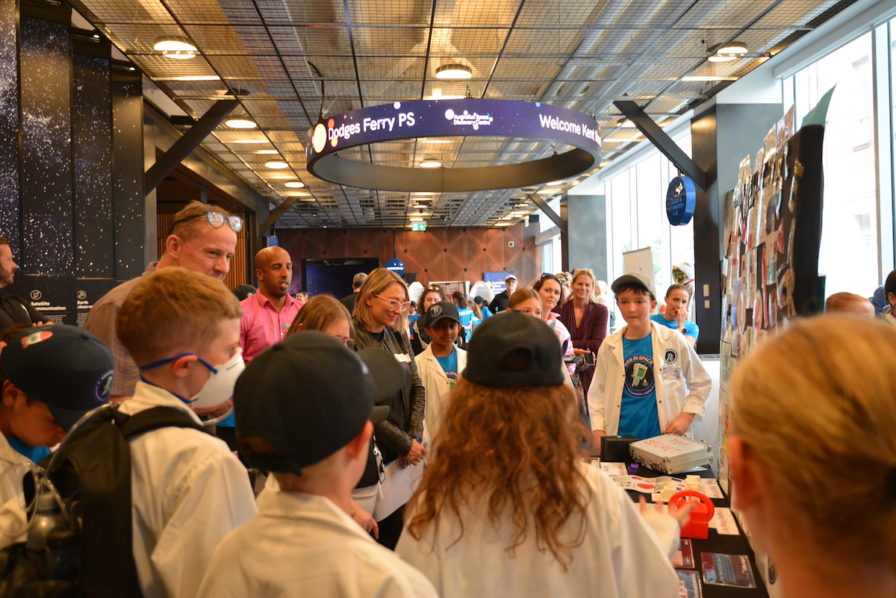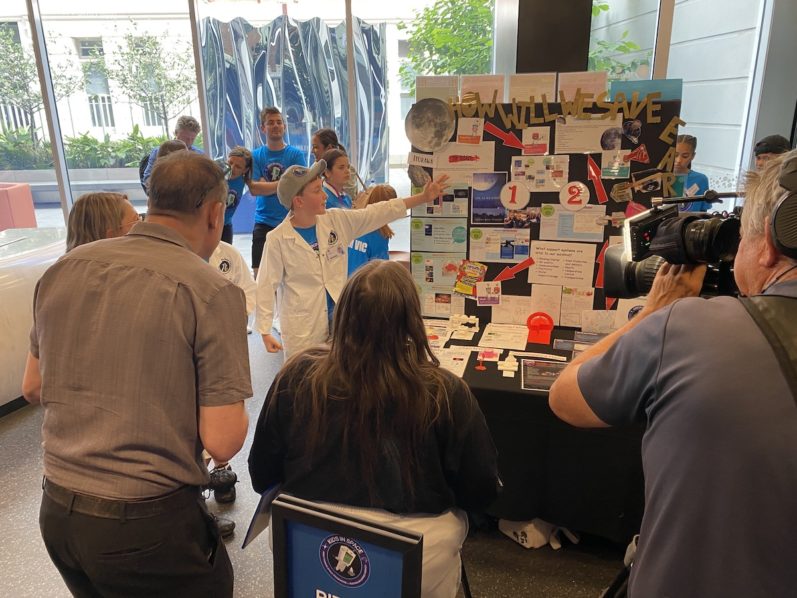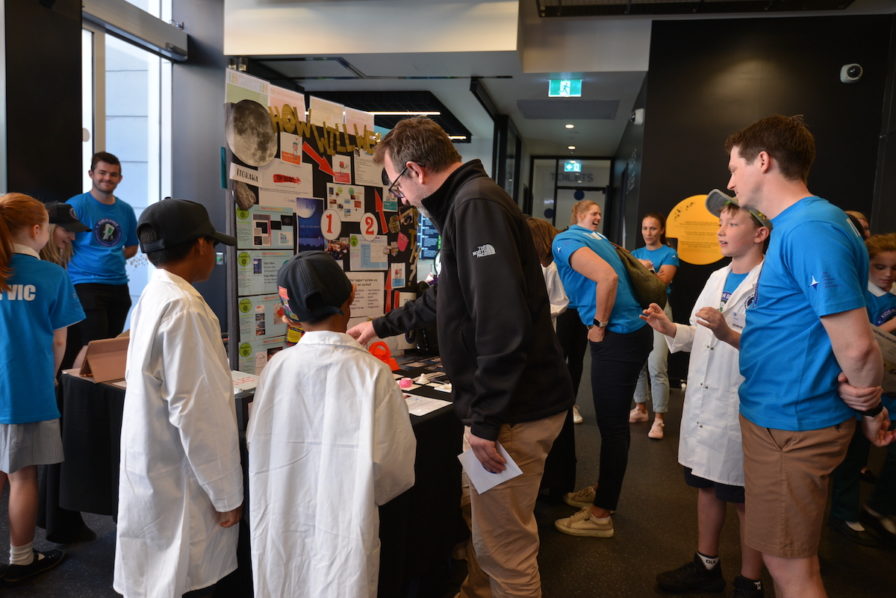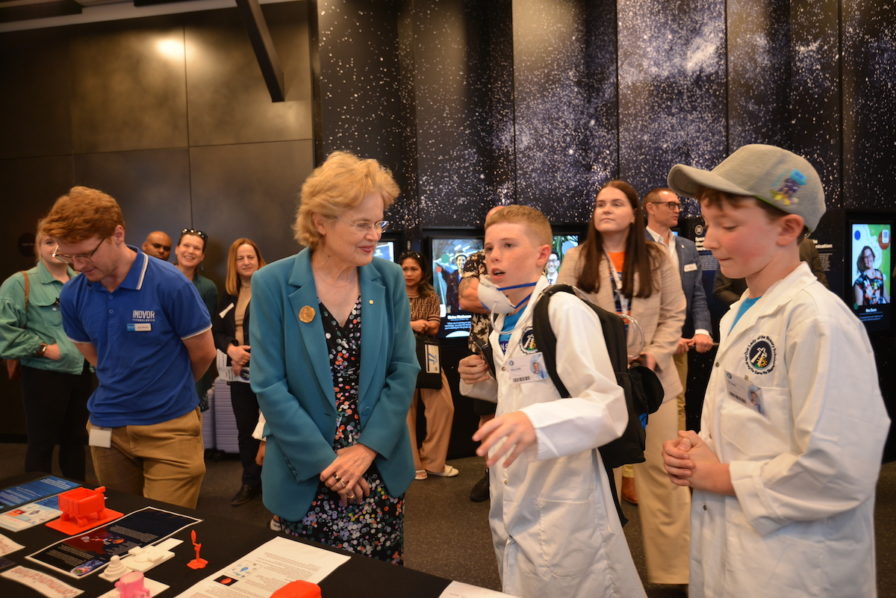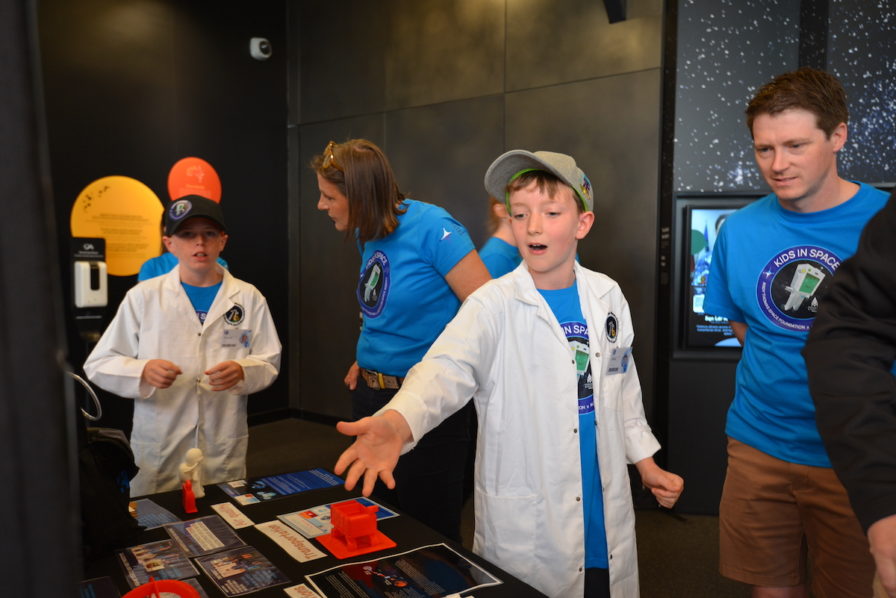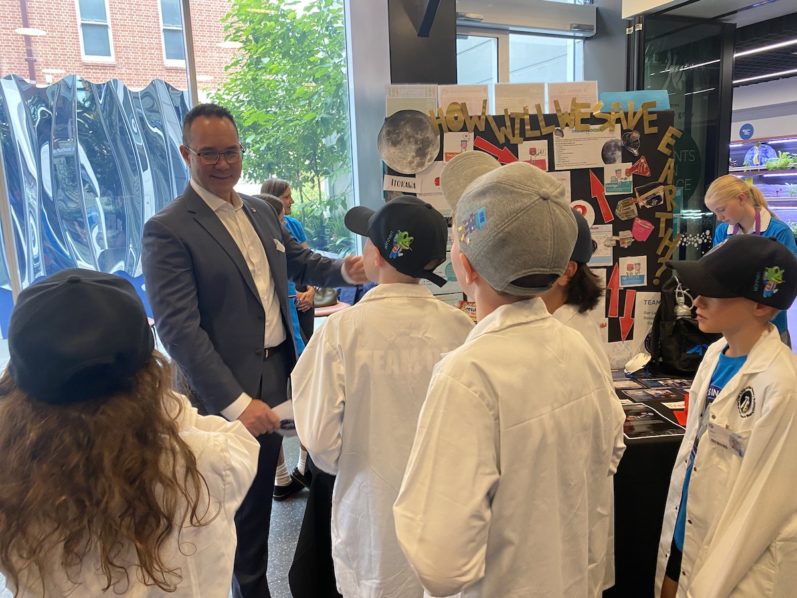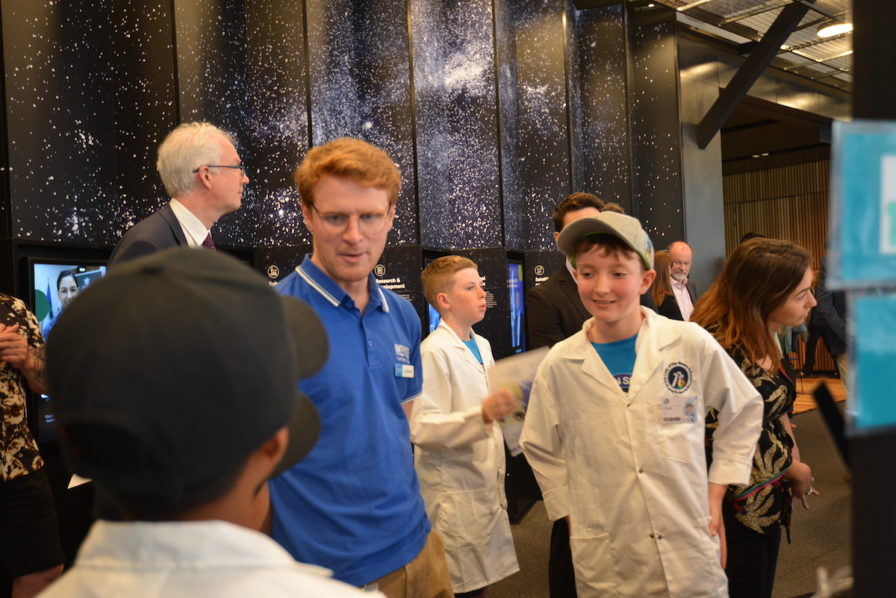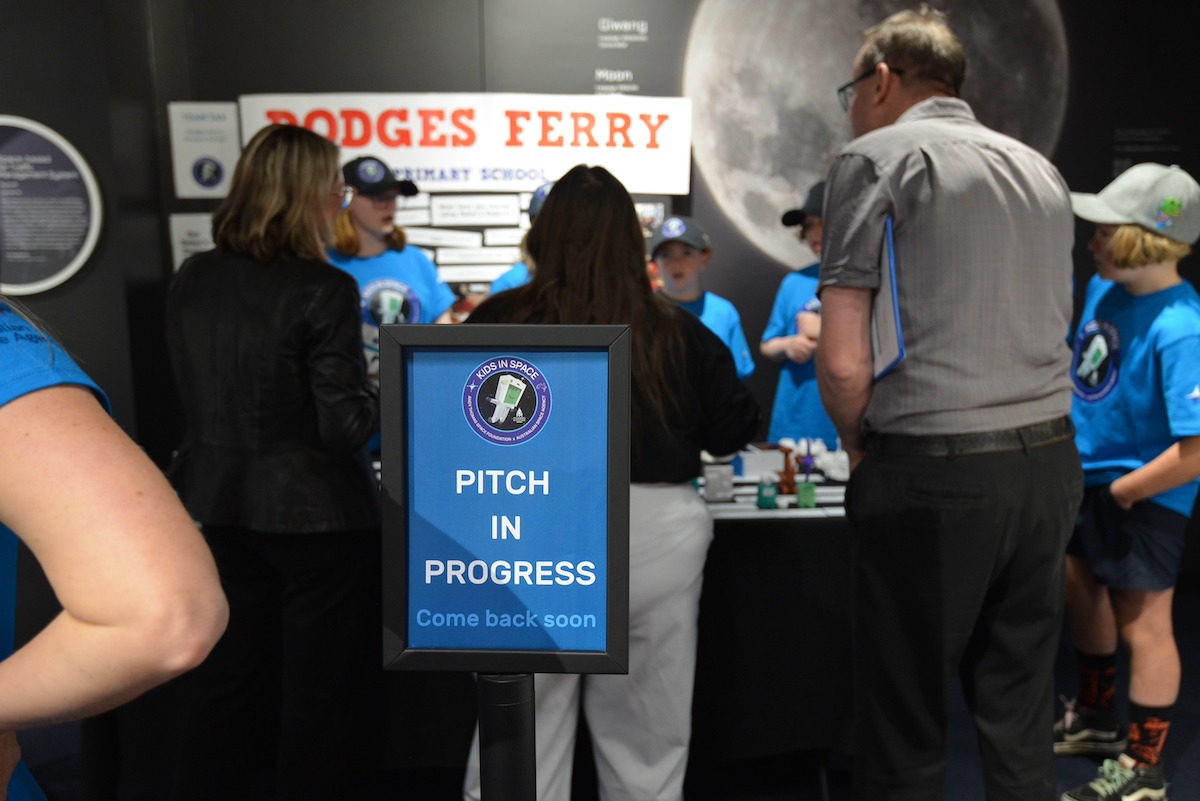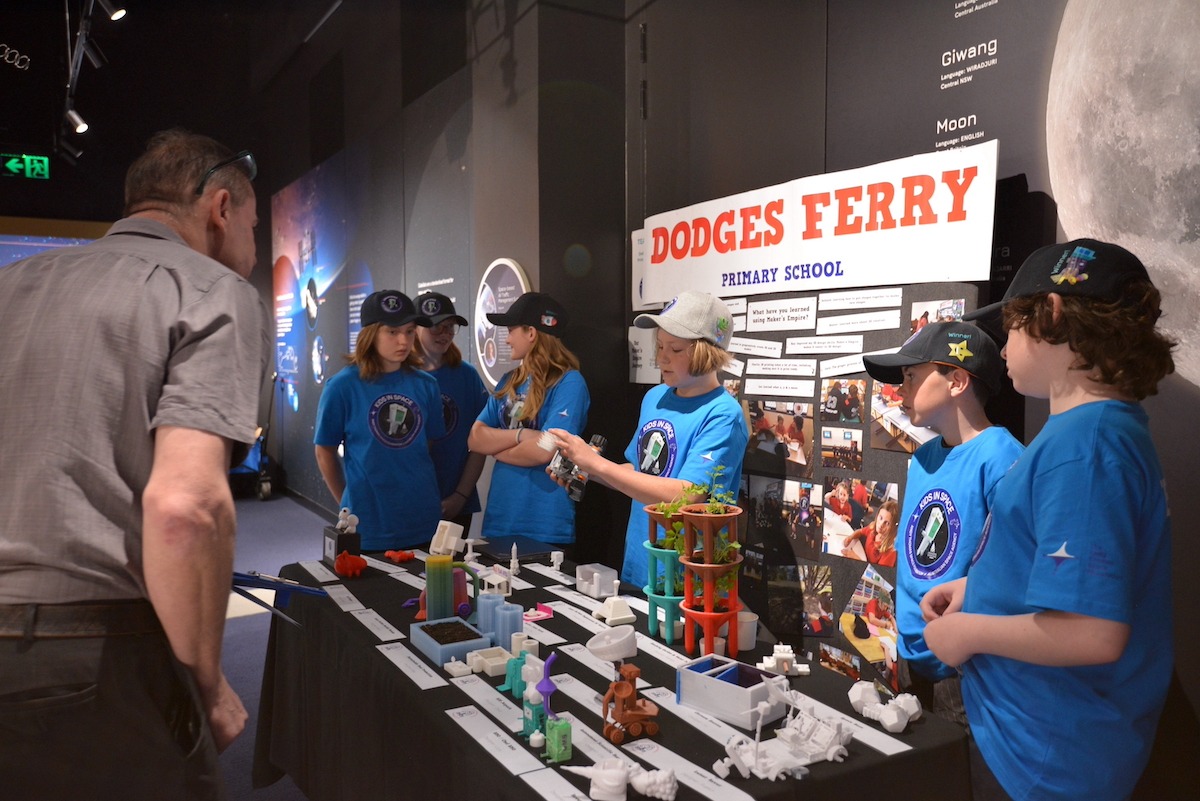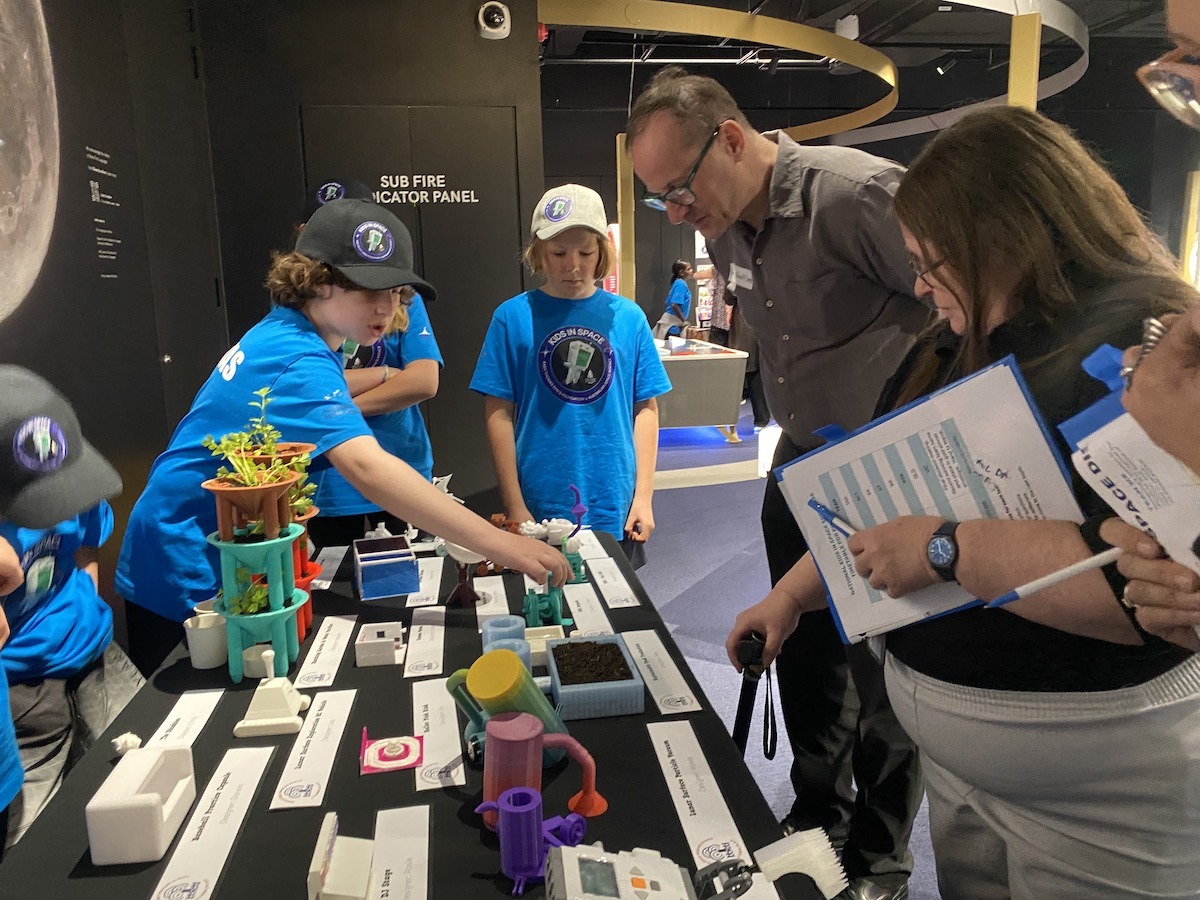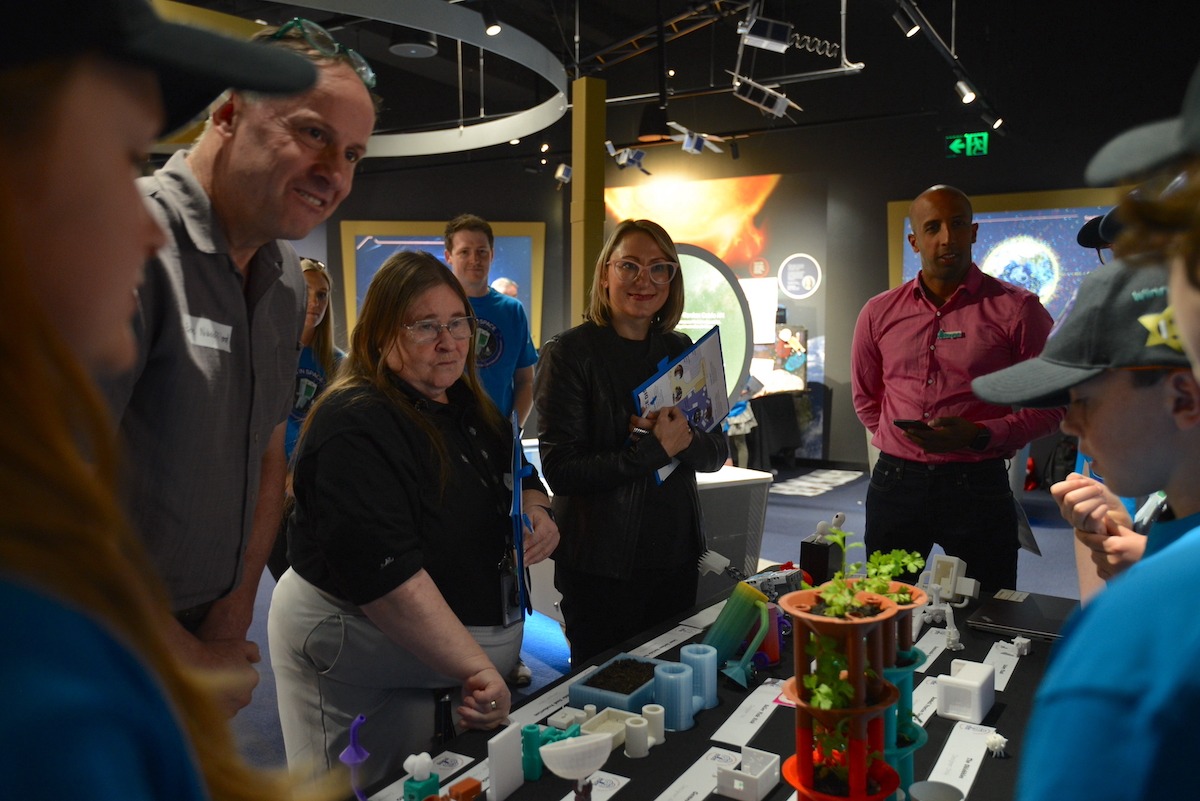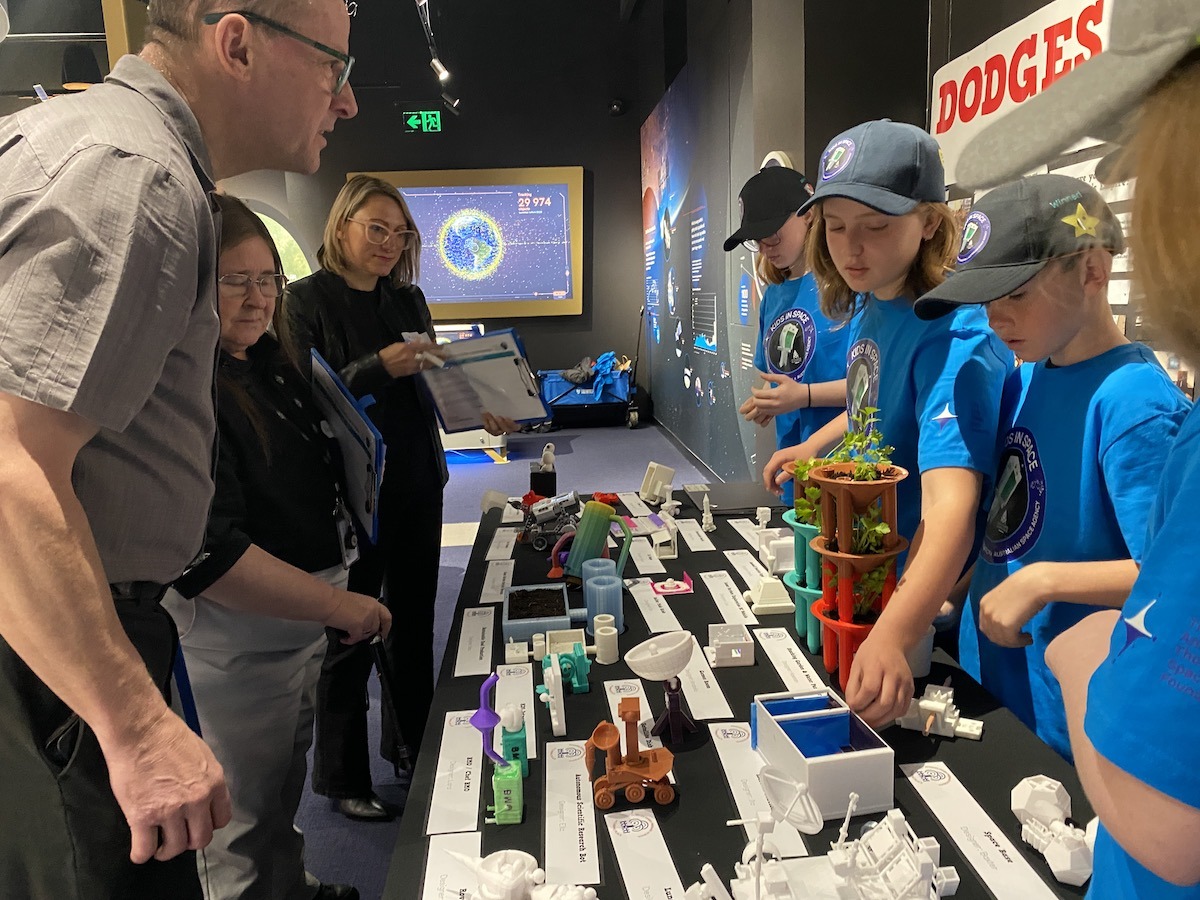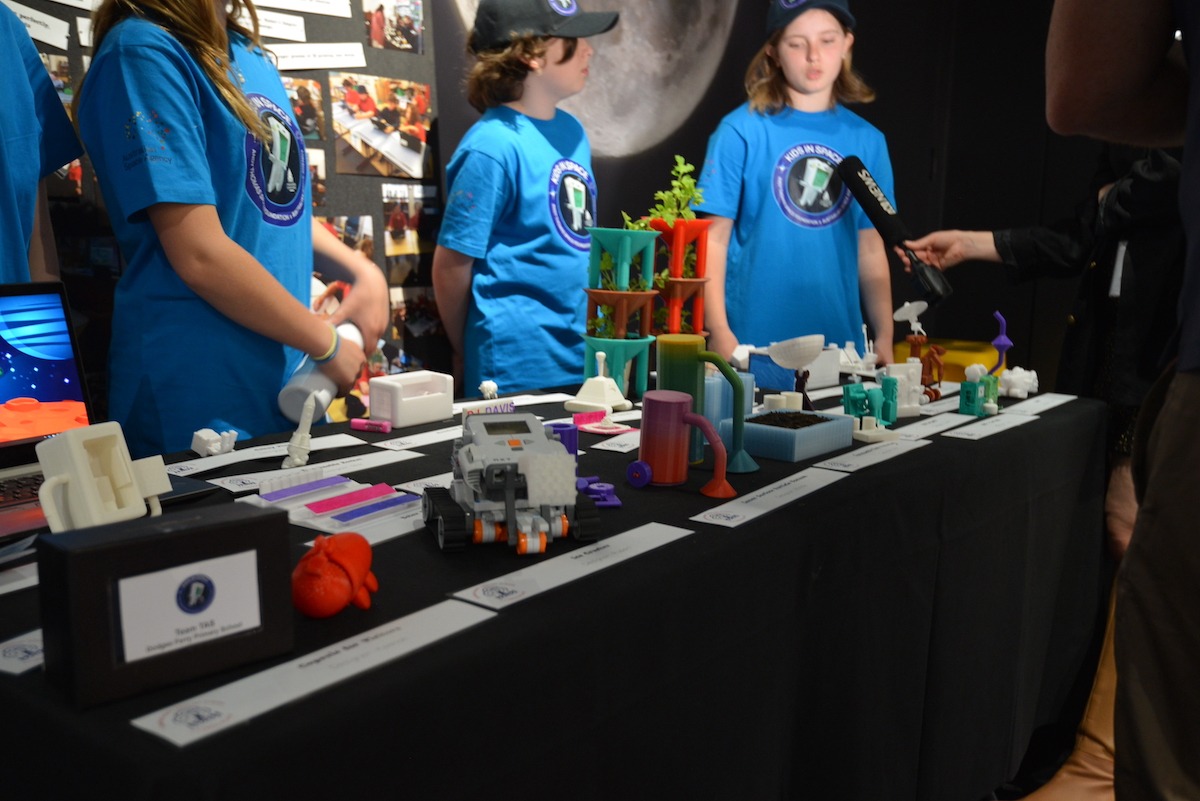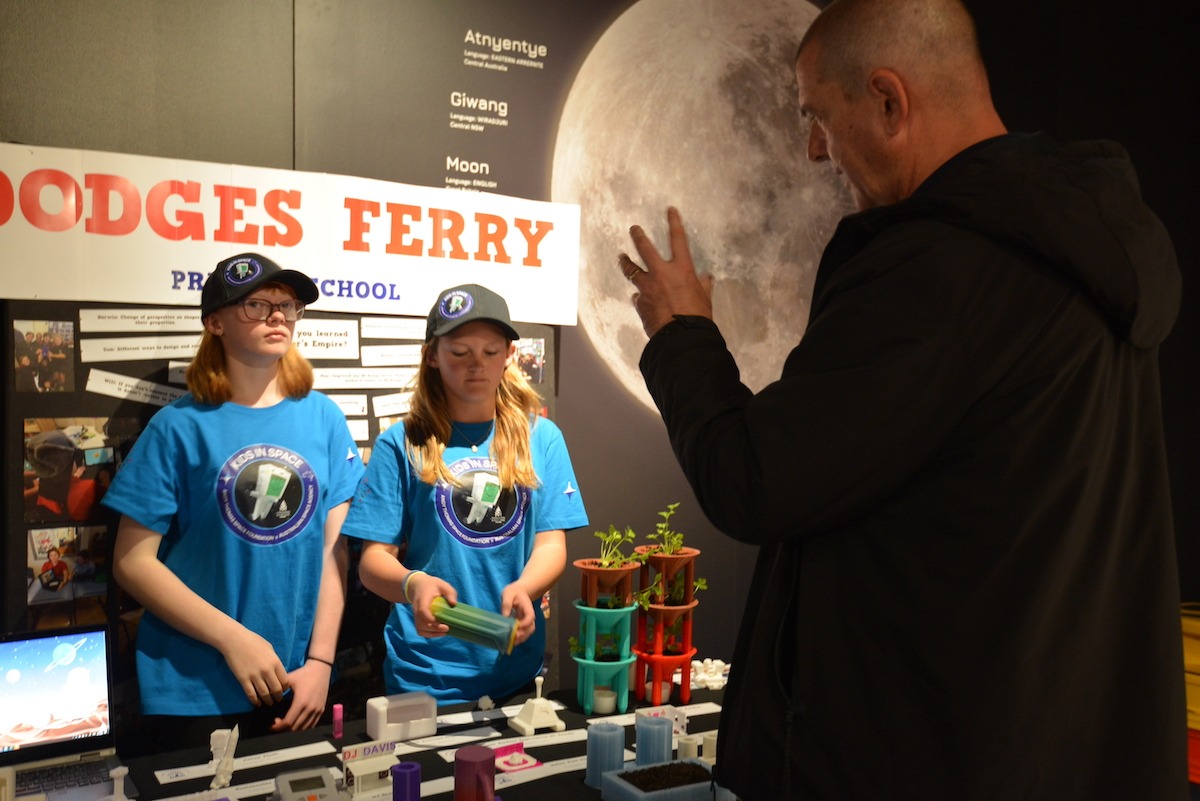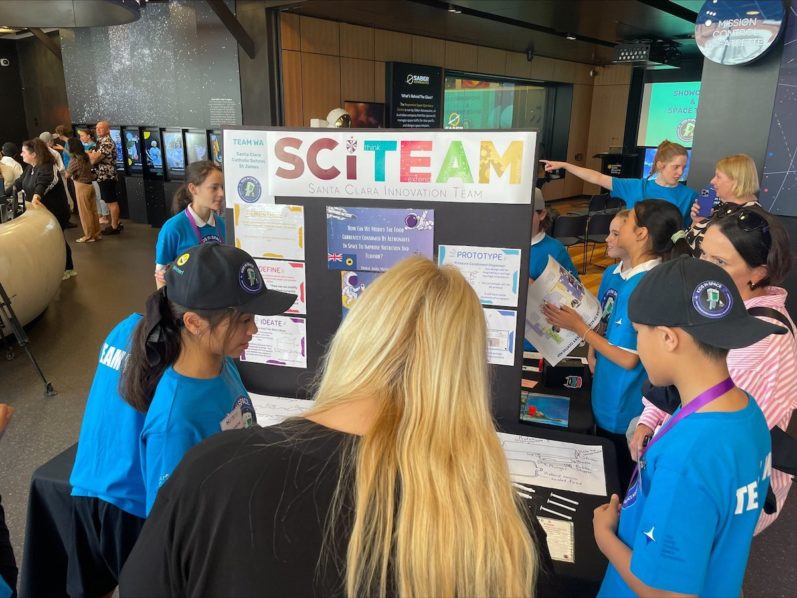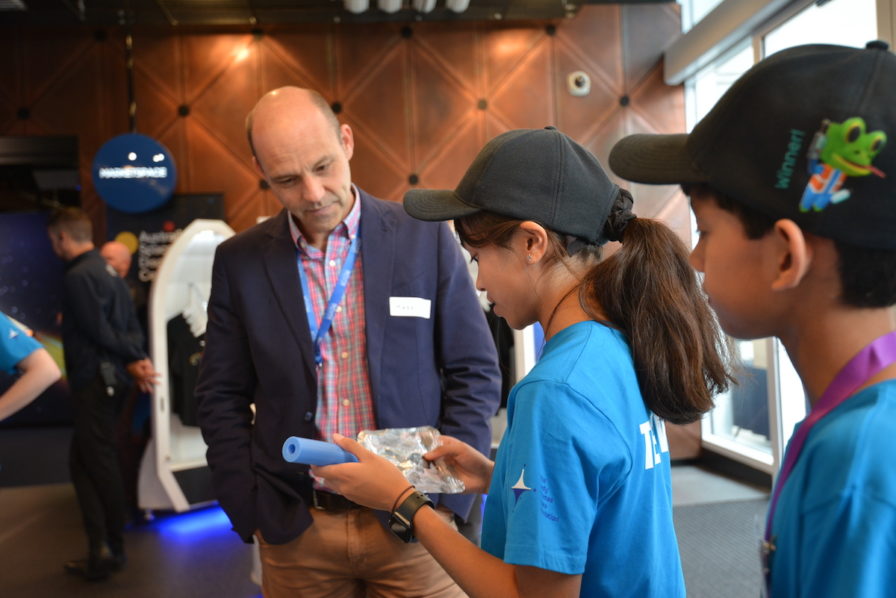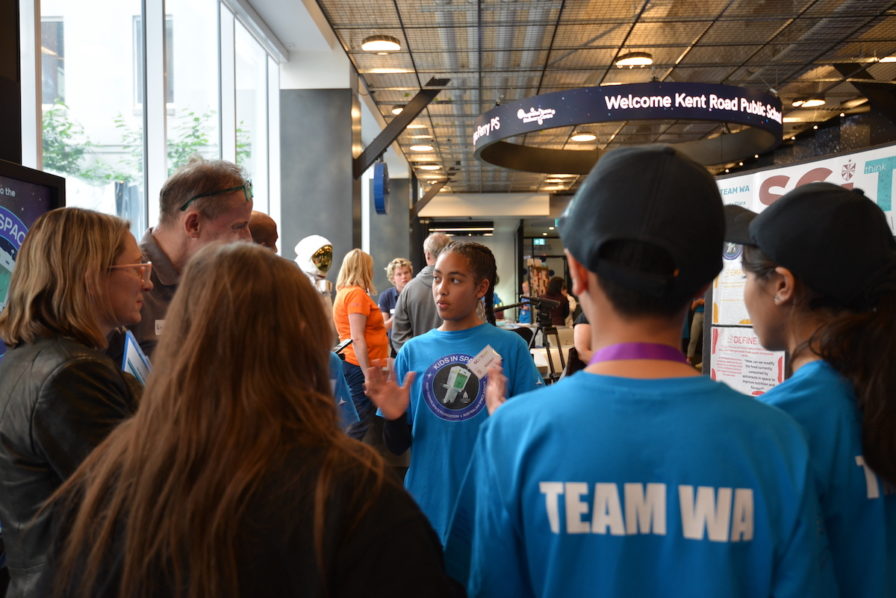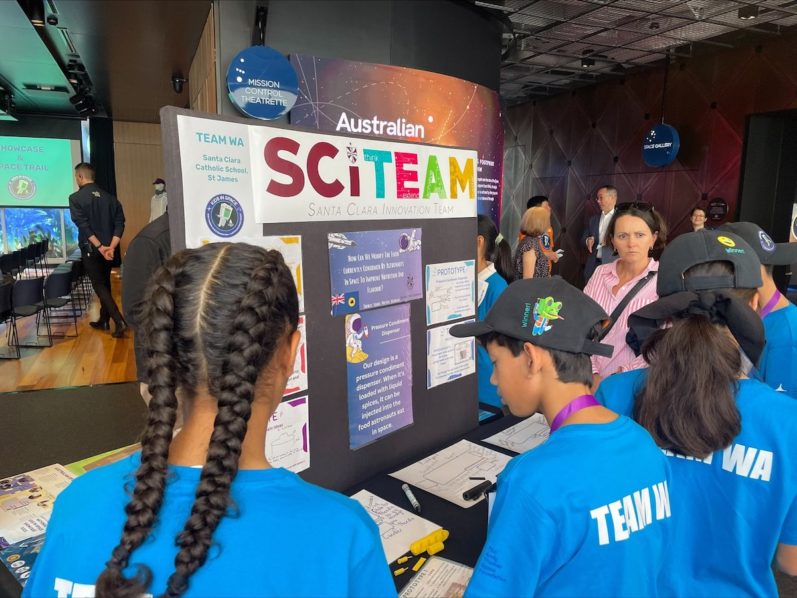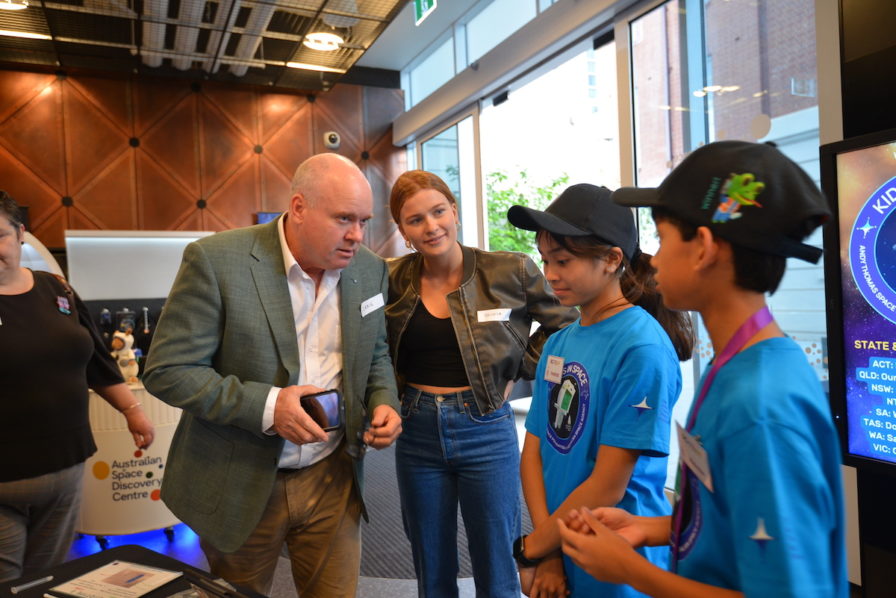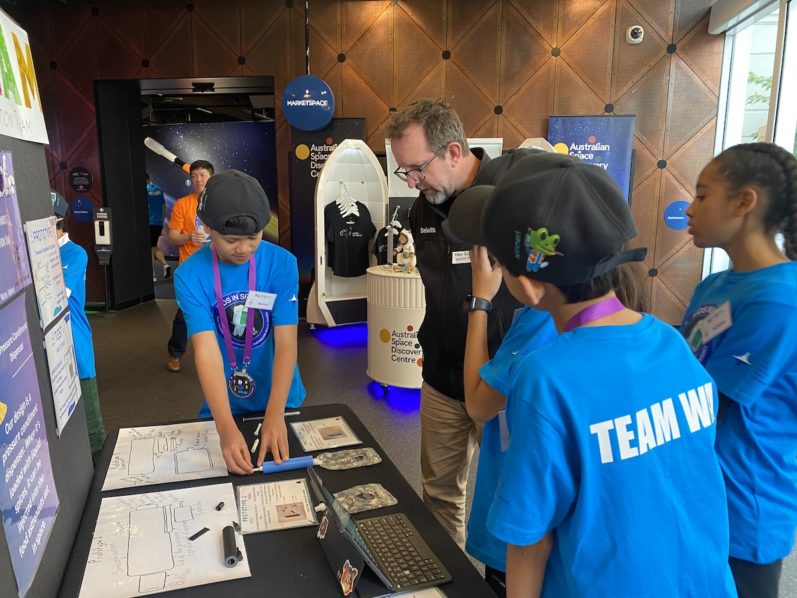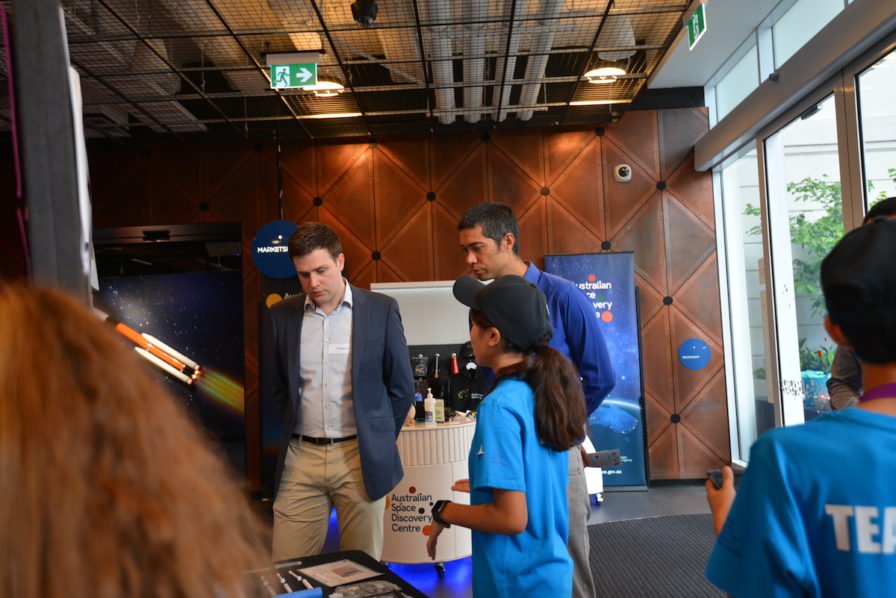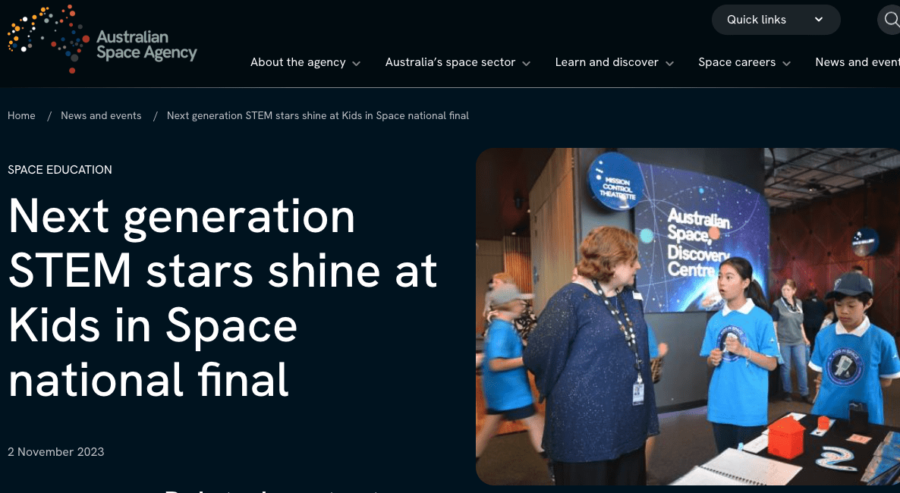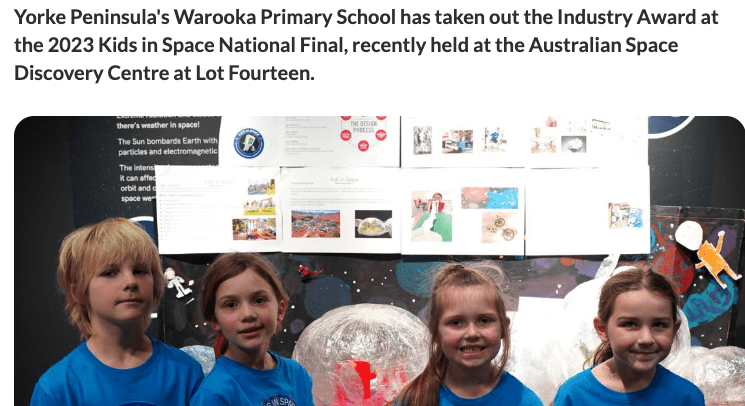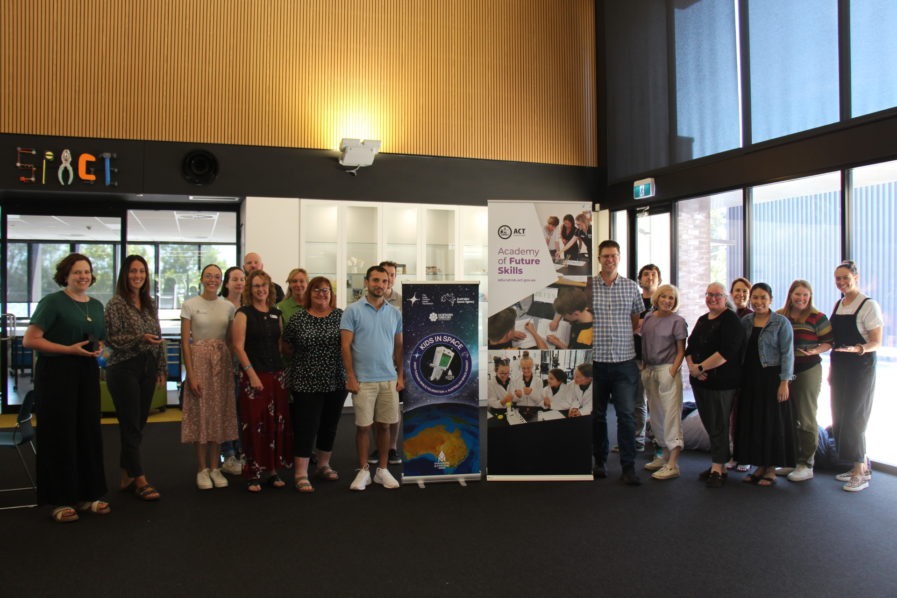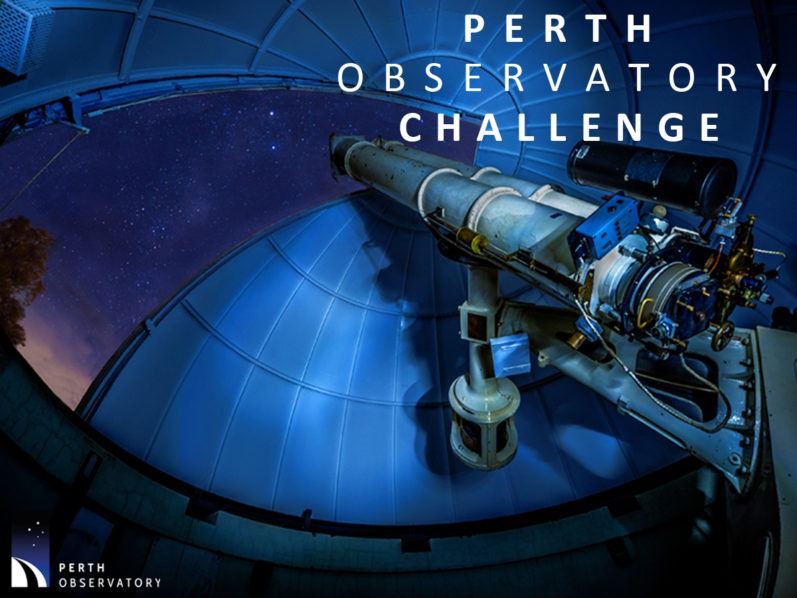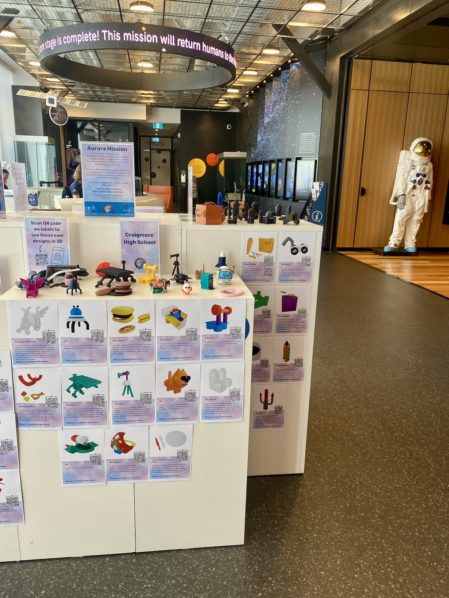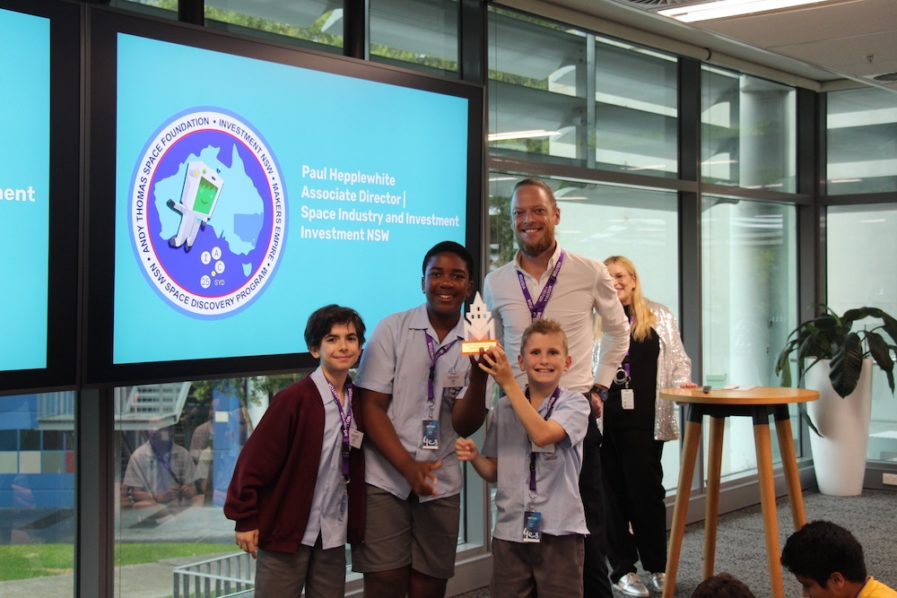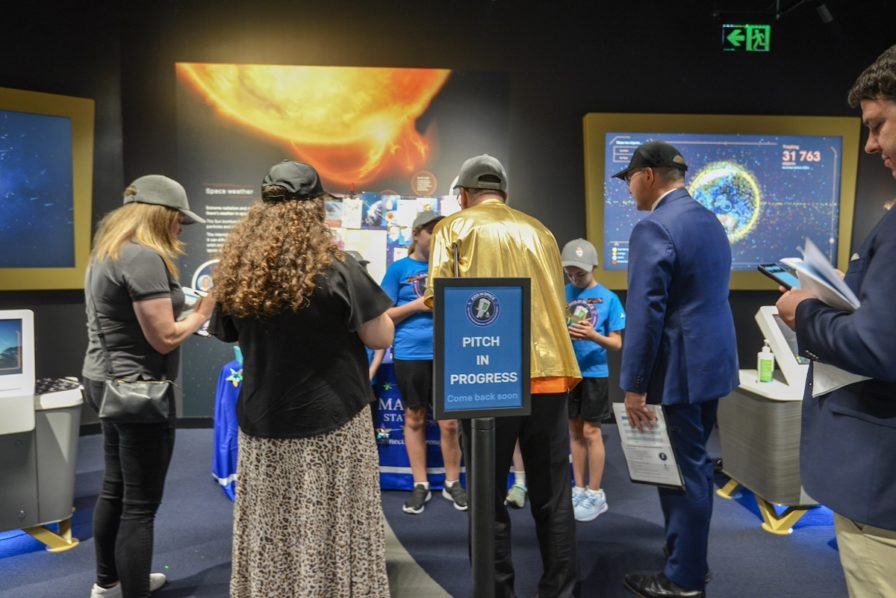Teams of primary school students representing eight schools from every state and territory in Australia came together at the Australian Space Discovery Centre recently to compete in the national Kids in Space finals and showcase their winning space-inspired designs.
Kids in Space is an Australia-first program from The Andy Thomas Space Foundation, sponsor, The Australian Space Agency and delivery partner, Makers Empire. With around 10,000 primary and middle school students, hundreds of teachers and 70+ schools across each state and territory impacted, Kids in Space engages students in exciting, space-themed STEM learning and Design Thinking. It introduces students to space technology, and promotes awareness of job opportunities in the space industry.
Each of the 70+ participating schools received access to a custom space-themed challenge course delivered via the popular Makers Empire 3D design app, used by 3.2+ million users and thousands of schools globally. Schools also received 3D printing credits and a 3D printer so students’ designs could be printed out and tested.
Starting with professional development days for teachers in February, followed by state and territory finals & expo-style showcases in June/July when students pitched their solutions to expert judges, Kids in Space culminated in the national finals at the Australian Space Discovery Centre in late October 2023.
Pre-Finals Ice Breaker
The night before the finals, the teams met at the Australian Space Discovery Centre for some space-themed activities and pizza to break the ice and get them ready for the next day.
National Kids in Space Finals
On Monday 30th October, the Australian Space Discovery Centre was a swirl of activity as students set up their displays and prepared to present their projects for the Kids in Space National Finals.
The morning began with an acknowledgement and welcome to country by Brenan Dew, Manager of the Australian Space Discovery Centre and a message from Katherine Bennell-Pegg, Director of Space Technology at the Australian Space Discovery Centre. Katherine is currently undertaking basic astronaut training at ESA’s European Astronaut Centre (EAC) near Cologne, Germany!
Mandi Dimitriadis, Director of Learning at Makers Empire, then explained the day’s activities. Each school’s stand would be visited by the judges so students would have the opportunity to pitch their designed solutions and answer questions. Students would also take turns visiting each other’s stands and also complete a space discovery trail.
During a lively expo-style showcase, students shared their winning designs with each other and presented their winning designs to both each other and the guest judges: Peter Nikoloff, acting Executive Director, Andy Thomas Space Foundation, Kerrie Dougherty, Senior Heritage and Outreach Officer, Australian Space Agency and Milica Symul, Chief Operating Officer, iLAuNCH Trailblazer. The judges had the difficult task of choosing a national winner from amongst the eight teams that had each won their state/territory finals.
Whilst the judges were busy touring the stands, students were also visited by lots of invited space industry guests who were impressed at how well students presented their solutions, and offered feedback on designs.
Following the showcase, students, teachers and invited guests heard from Michael Davis OA, Chair, Andy Thomas Space Foundation, Liz Pearce, Director of Space Transportation and Human Spaceflight, Australian Space Agency, the Honourable Frances Adamson AC Governor of SA, and Richard Price, CEO, Defence SA.
The speakers congratulated the teachers and students on their projects, and emphasised that everyone in the room was a winner.
National Winners
Gunbalanya School NT
Students responded to the problem of crossing and fishing the East Alligator River, a notorious water crossing full of potentially deadly hazards. Students created an artefact to determine the best time for hunting and gathering that combined traditional systems of astronomical knowledge and modern technologies.
Lady of Good Counsel Primary School, Deepdene VIC
As a stepping stone to future space exploration, students decided to help create a sustainable way for astronauts to grow food for consumption in space.
Students designed a hydroponics solution to grow vegetables. Their design included a technology-equipped water rover and filtration systems and was informed by the UN’s Sustainable Development Goals.
Warooka Primary School SA
Students identified a need to develop a way to get children living on Mars to exercise so that they do not lose muscle strength or bone density and have a place to play. Students developed three exercise-based playgrounds with equipment that used magnets to work in micro-gravity housed within domes. The playgrounds represent three different Earth environments: the ocean, fantasy and the jungle.
State & Territory Winners
Kingsford Smith School ACT
Students identified a need to develop technology to build suitable habitats for the astronauts when they undertook lunar missions. Students designed a team of rovers to be sent to the moon in advance of any landing craft. The rovers would work together to build a home for the visiting humans using the natural resources available on the moon.
Kent Road Public School NSW
Students responded to the problem of a warming planet and the negative effects of more frequent bushfires on local wildlife. Students used data gathered from space to analyse areas that have high risk of fire. They designed a small and transportable habitat for marsupials and other small creatures who have the potential for loss of habitat and vulnerability to predators following a bushfire.
Our Lady of the Rosary School QLD
Students responded to a scenario in which an asteroid collided with the moon, forcing it closer to the Earth.
Using current space technology to inform their designs, students designed and built models of nine life support systems that would be crucial for survival in Australia.
Santa Clara Primary School WA
Students explored the question, ’How can we modify the food currently consumed by astronauts in space to improve nutrition and flavour?’ Students designed the ‘Pressure Condiment Dispenser, ’ a device innovated from the EpiPen, allowing astronauts to inject granulated spices and flavourings directly into the centre of their food without the risk of it getting into the air.
“The first year of the national Kids in Space program has been a resounding success,” said, Peter Nikoloff, Executive Director (Acting), Andy Thomas Space Foundation.
“It has been fantastic to see how well the students and teachers have engaged with this program, and the innovative and creative solutions that students have devised using space-technology to solve real-world problems both on earth and in space.”
Head of the Australian Space Agency, Enrico Palermo said space is the gateway to STEM and the development of diverse skills which are vital for our future workforce.
“Inspiring young Australians about the importance of space is fundamental to the Agency’s mission,” Mr Palermo said.
“The Kids in Space program teaches children – and their parents – about how space improves our everyday lives and stirs the imagination for kids of all abilities and interests to consider a career in STEM.
“By stimulating young people with collaborative hands-on design challenges, we can help Australia build the diverse workforce it needs to realise our full potential.”

